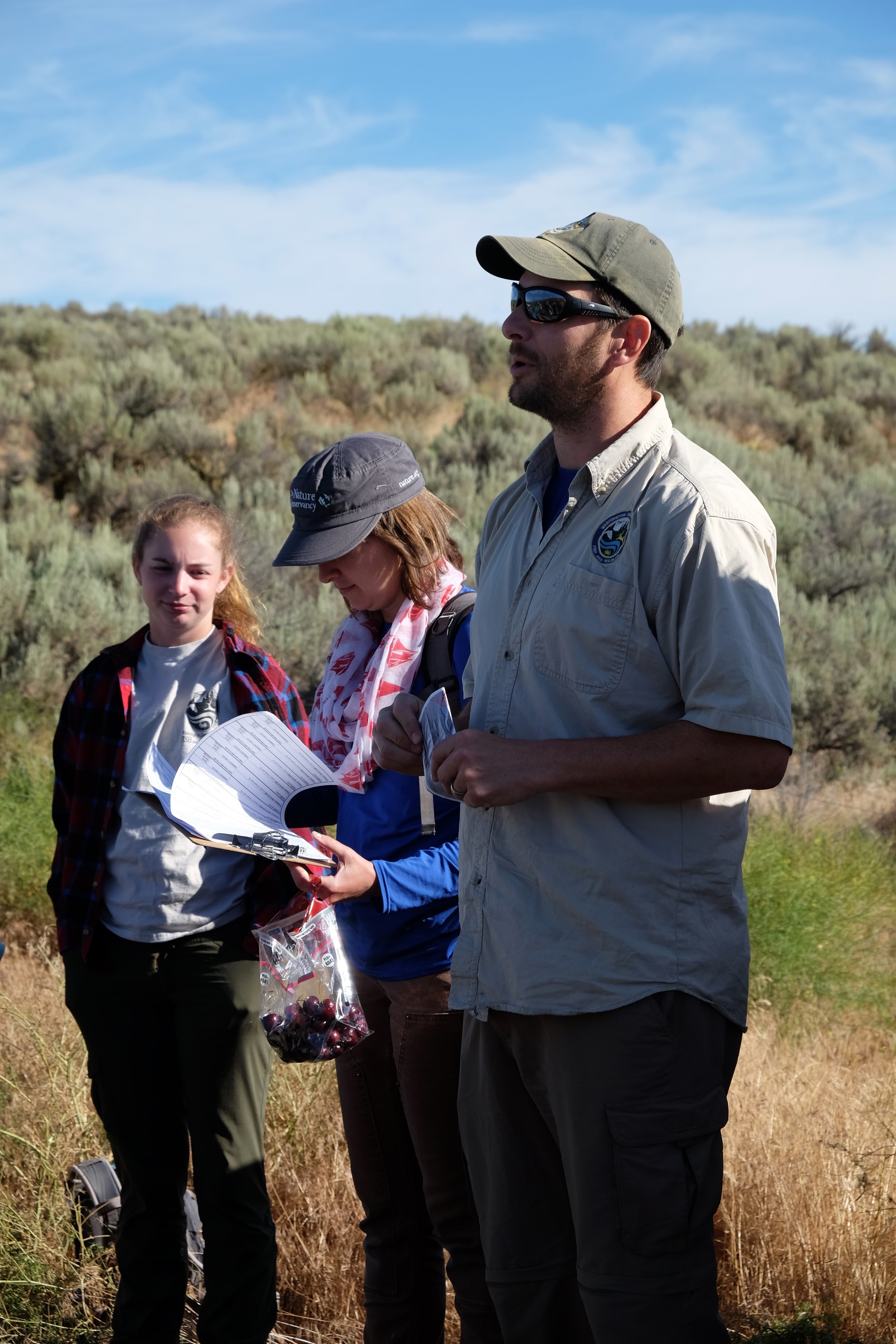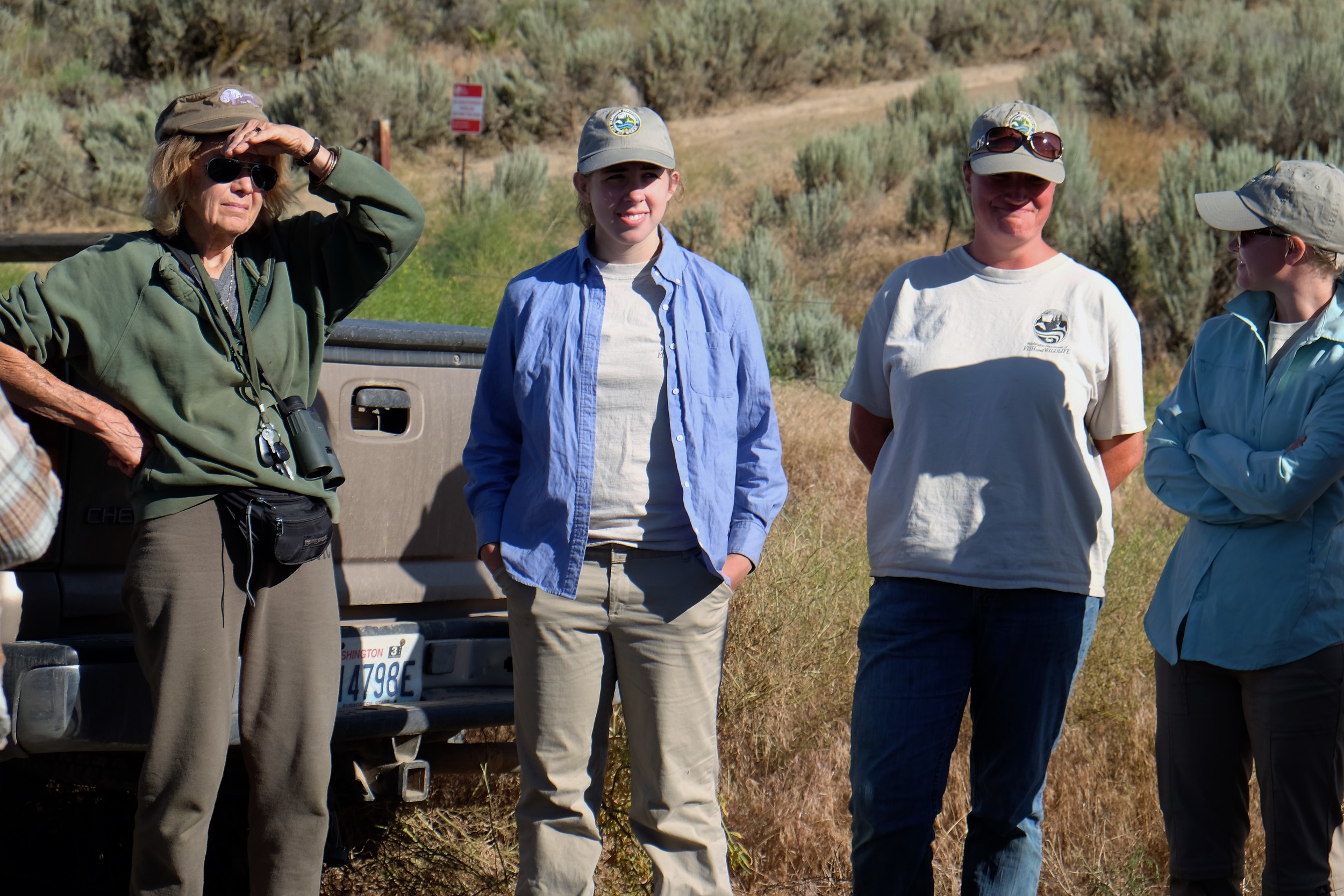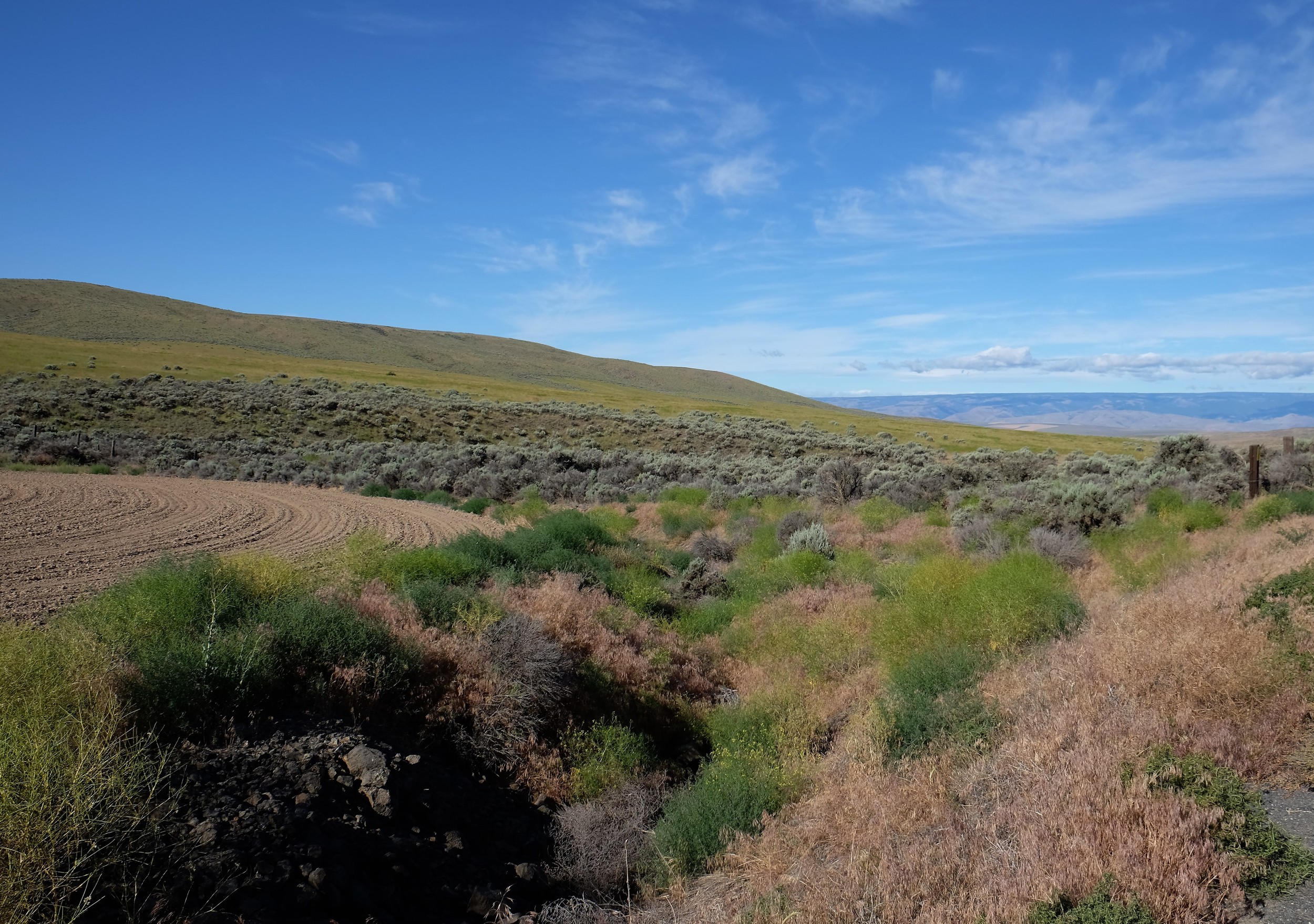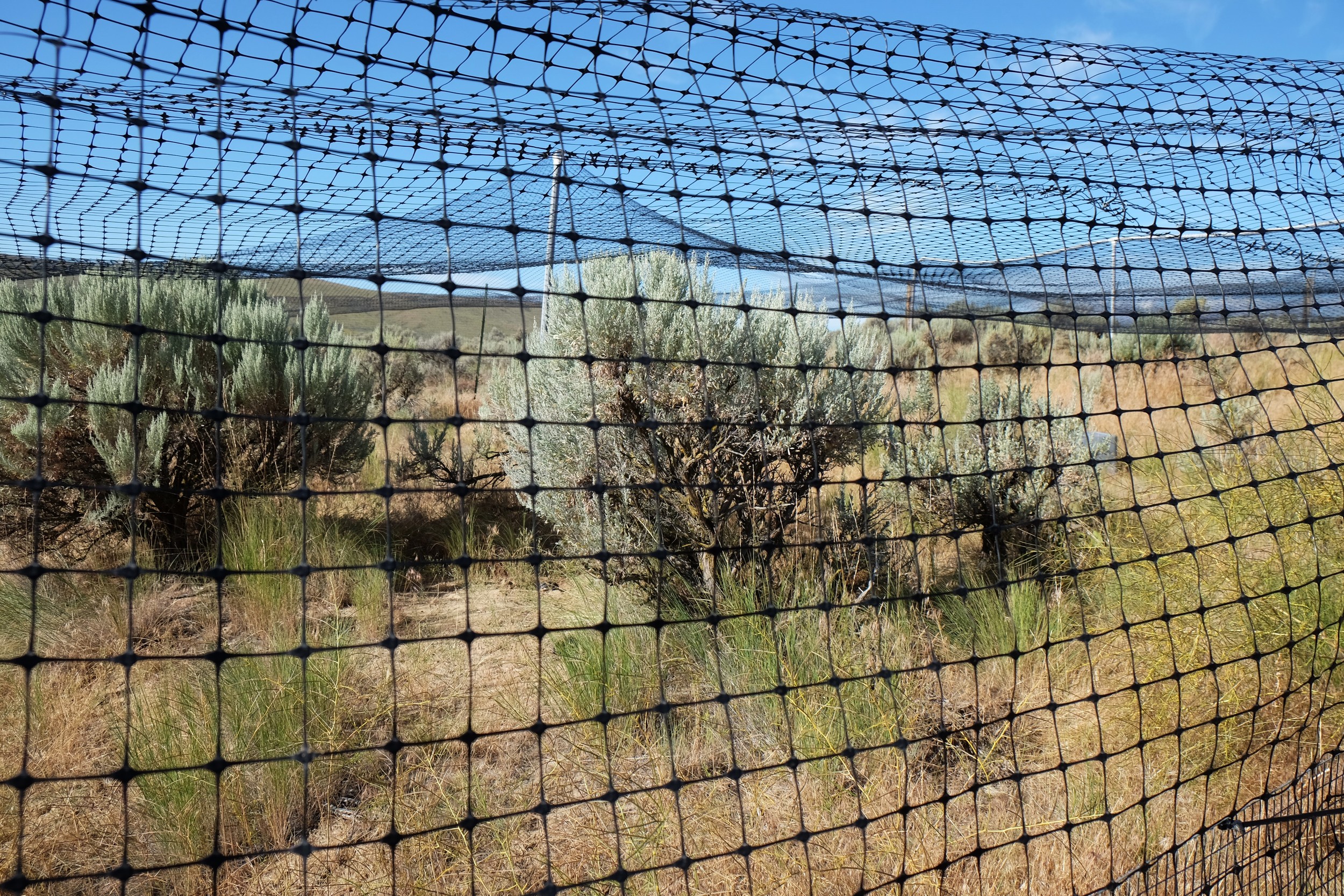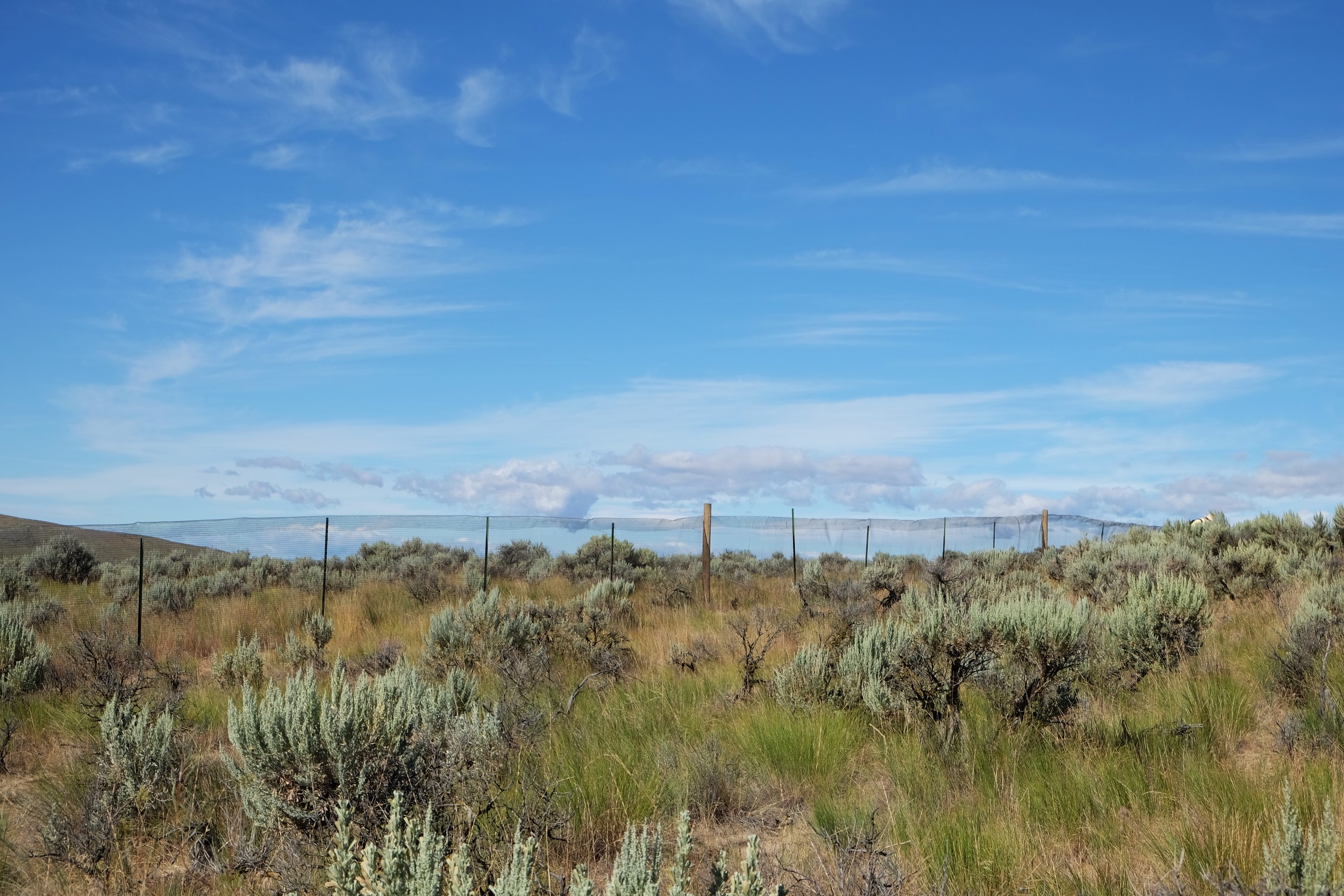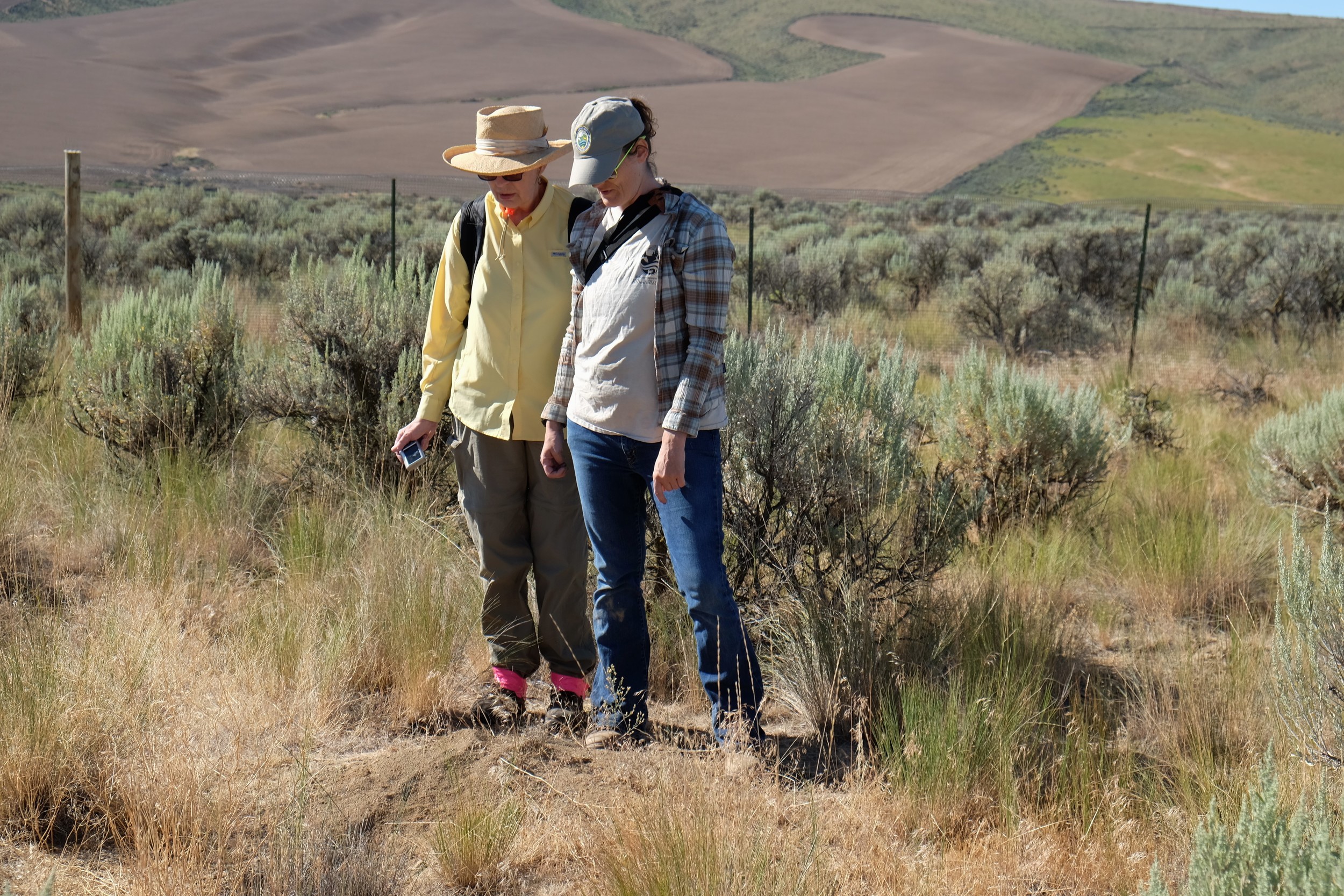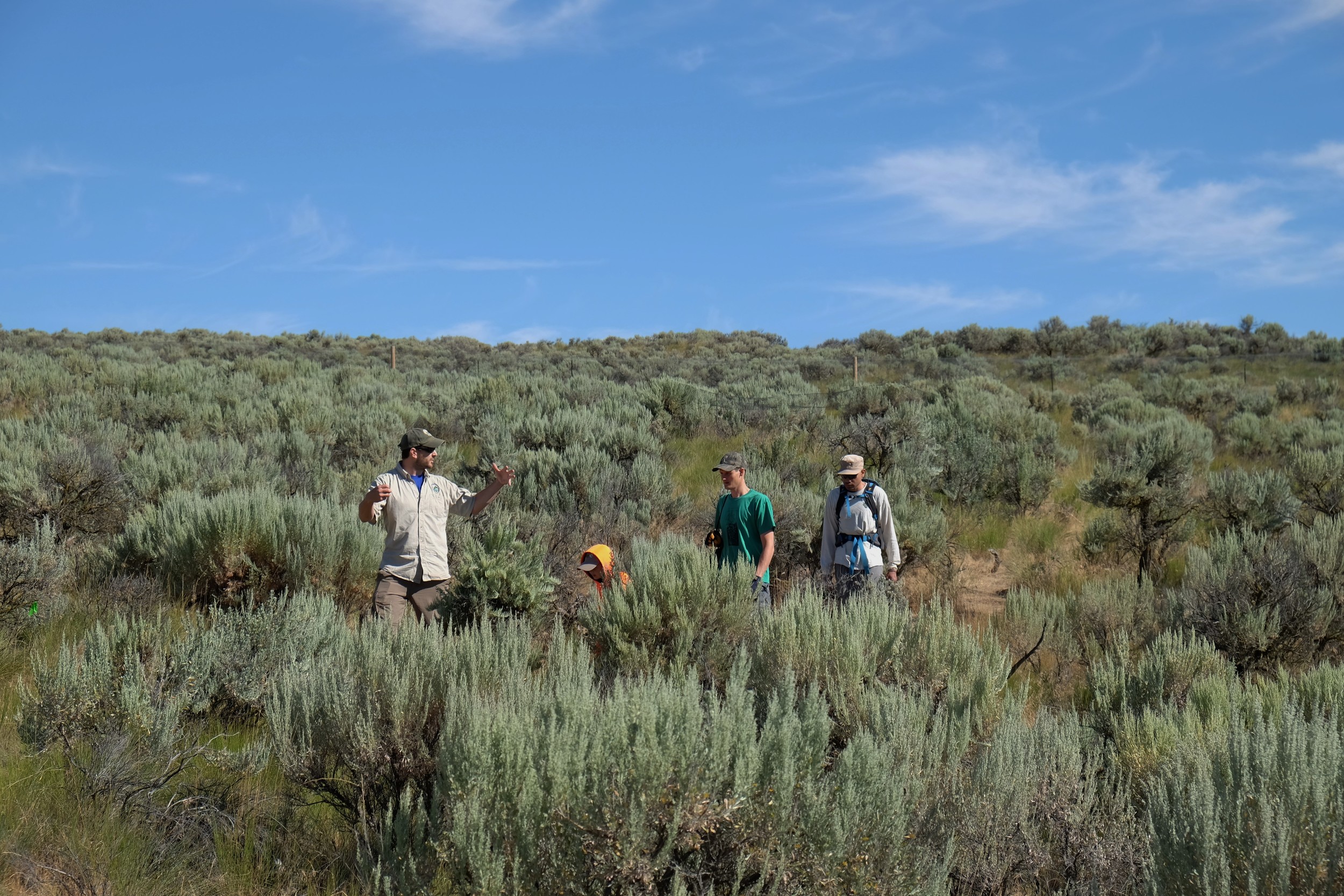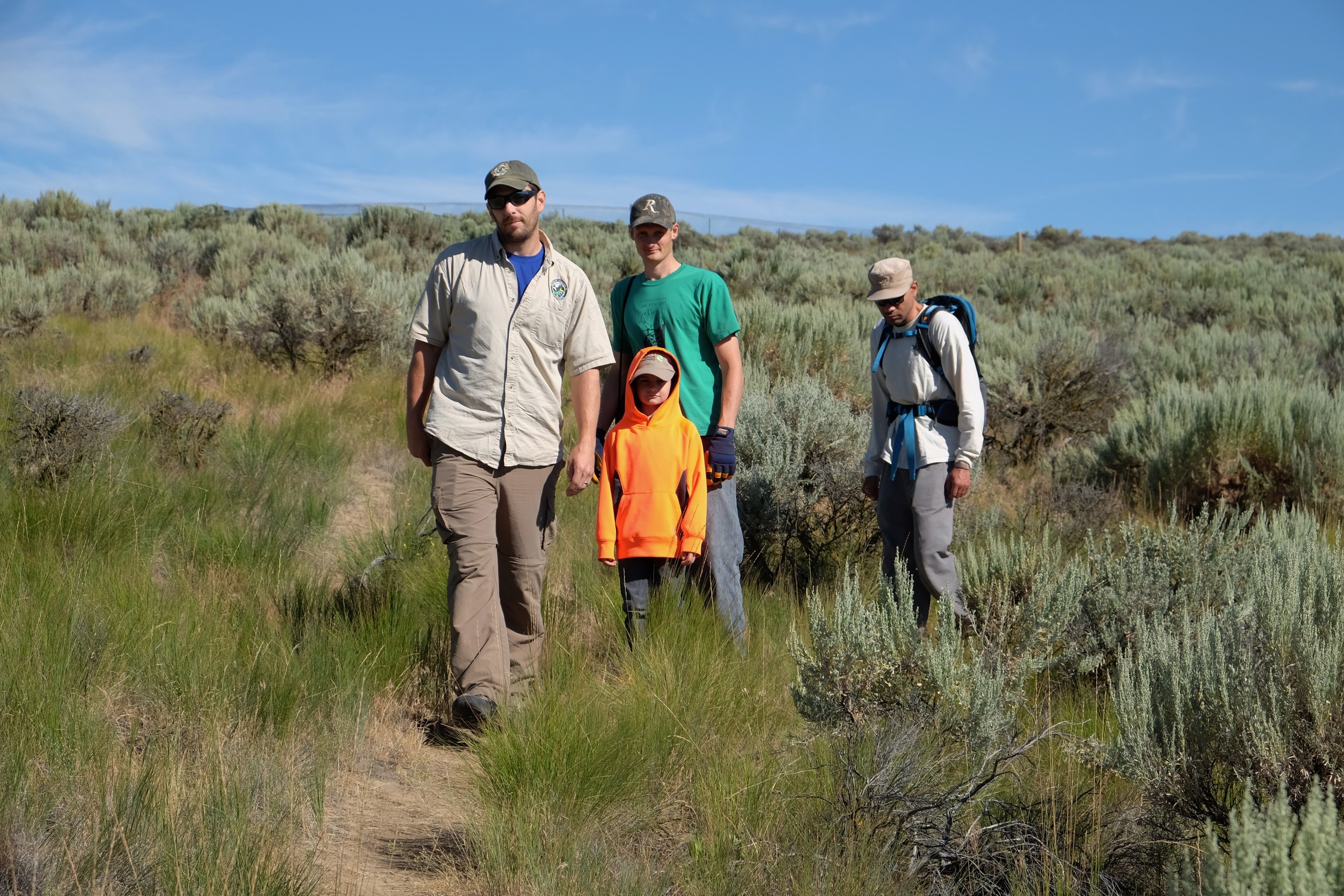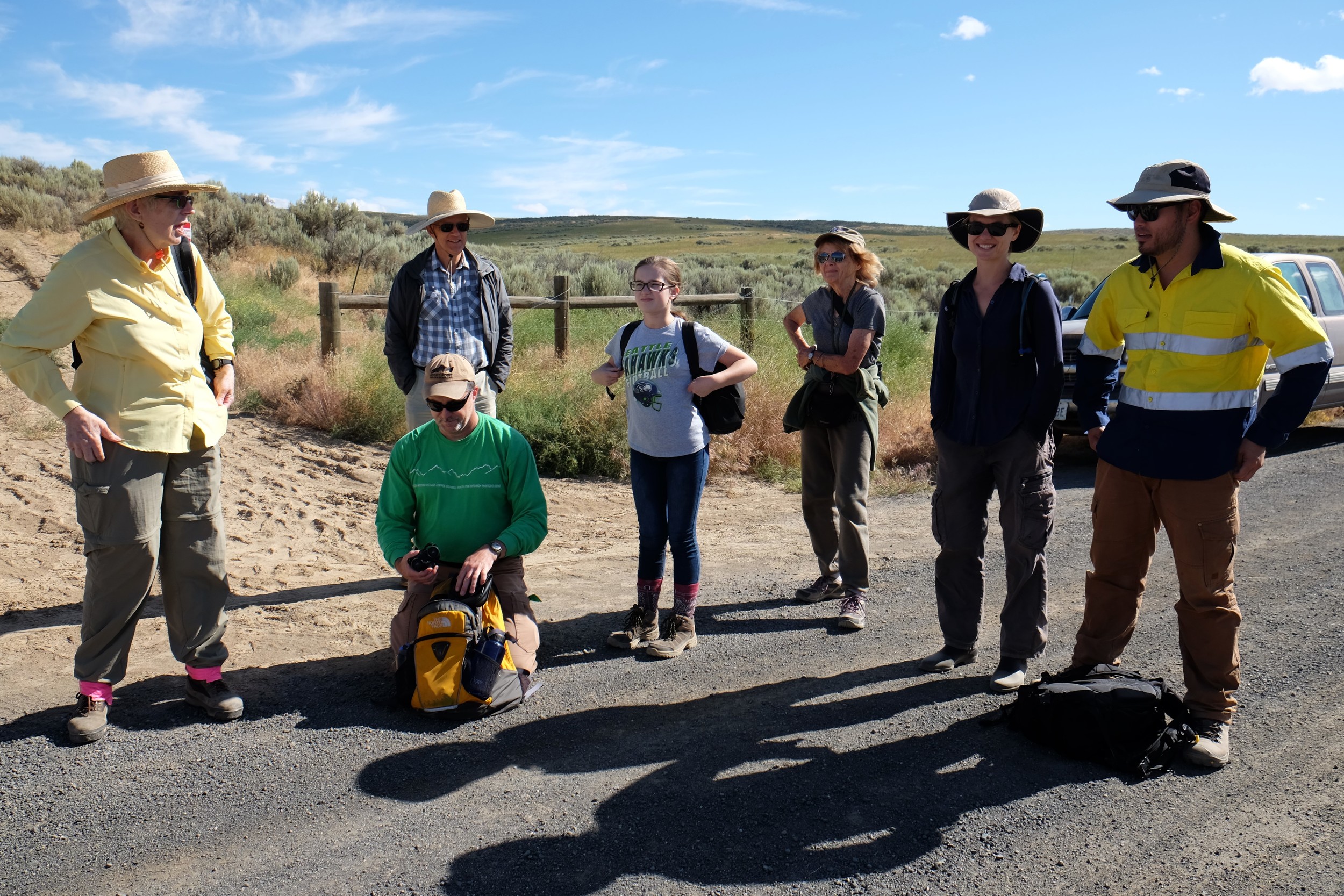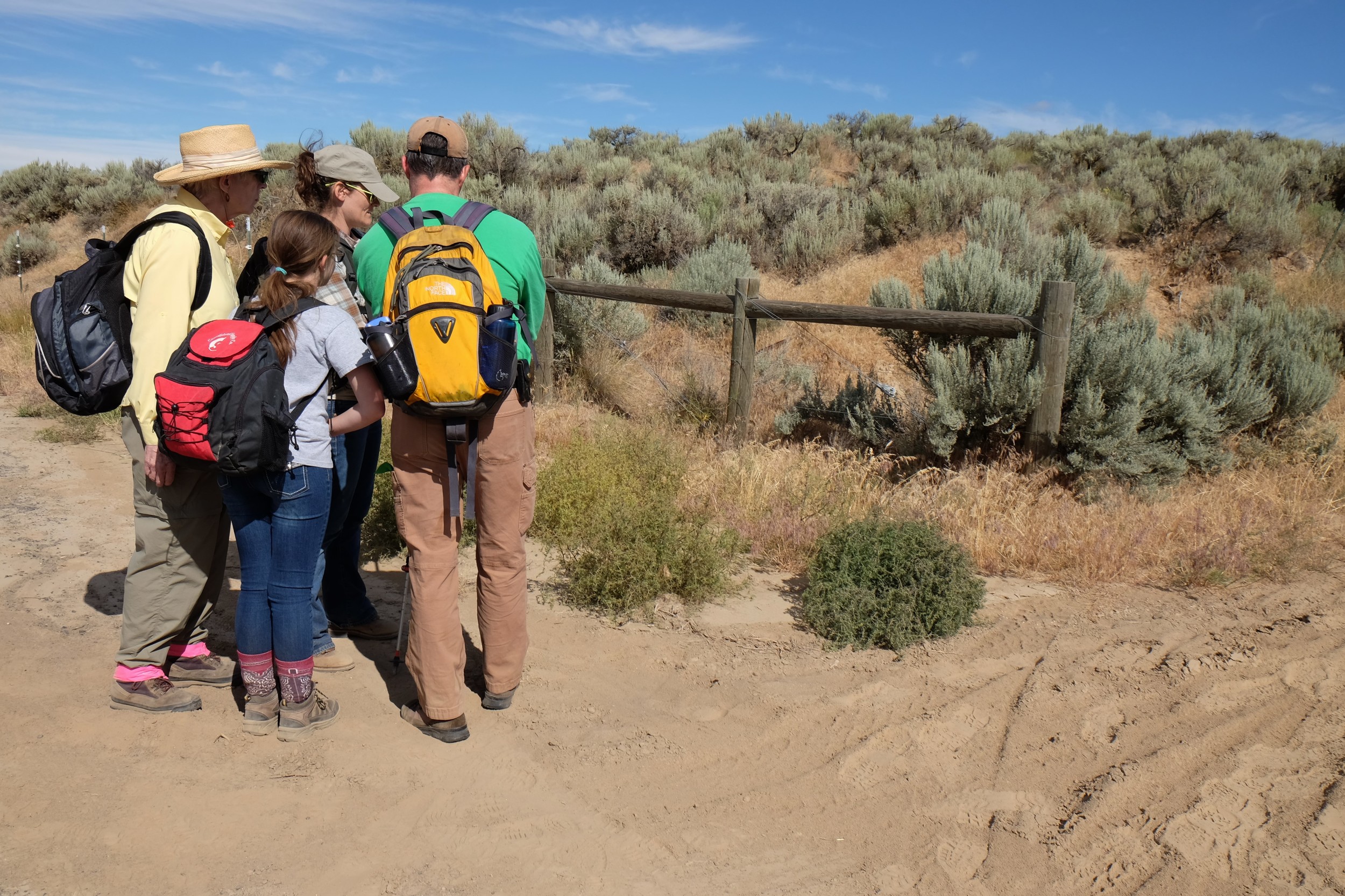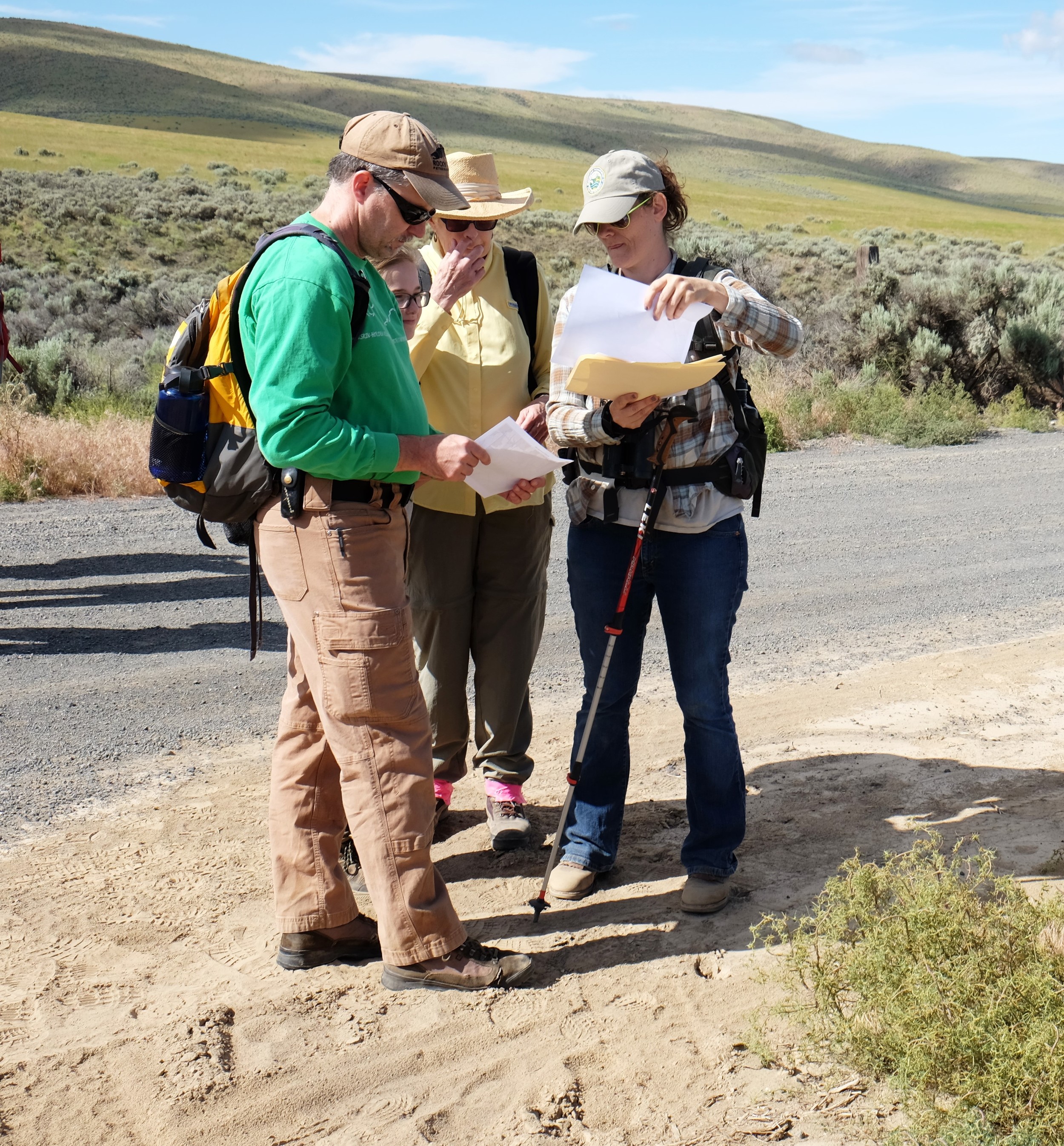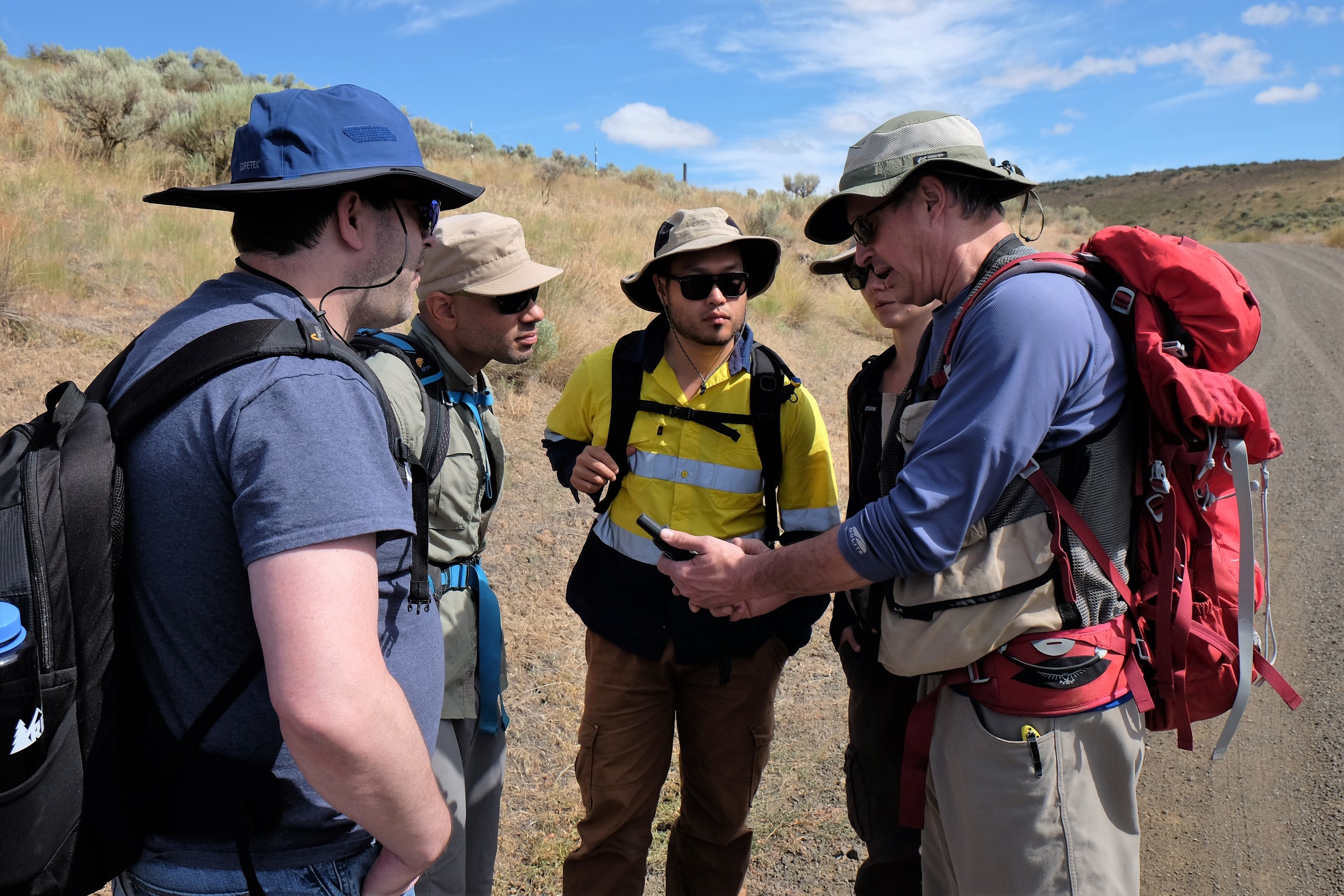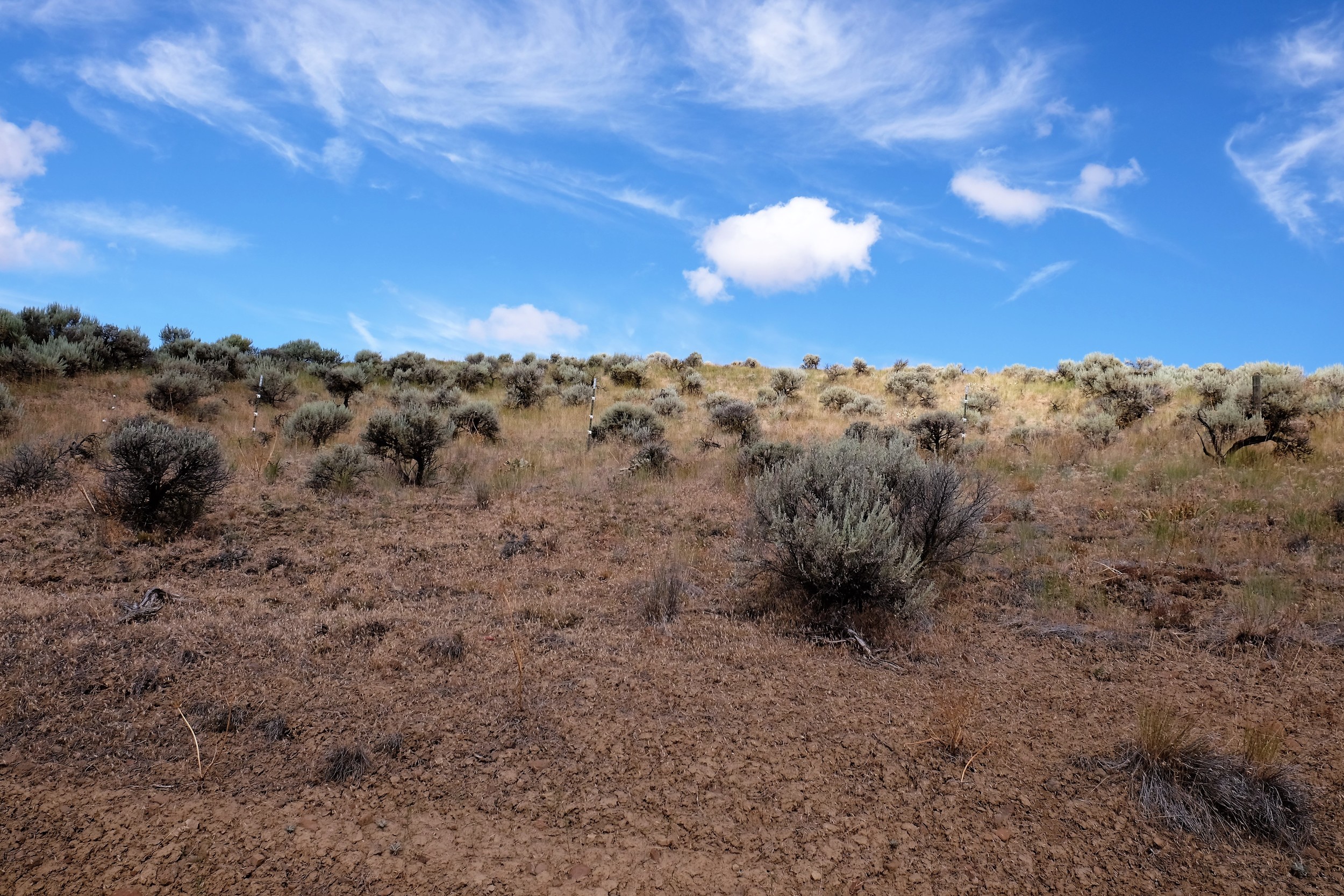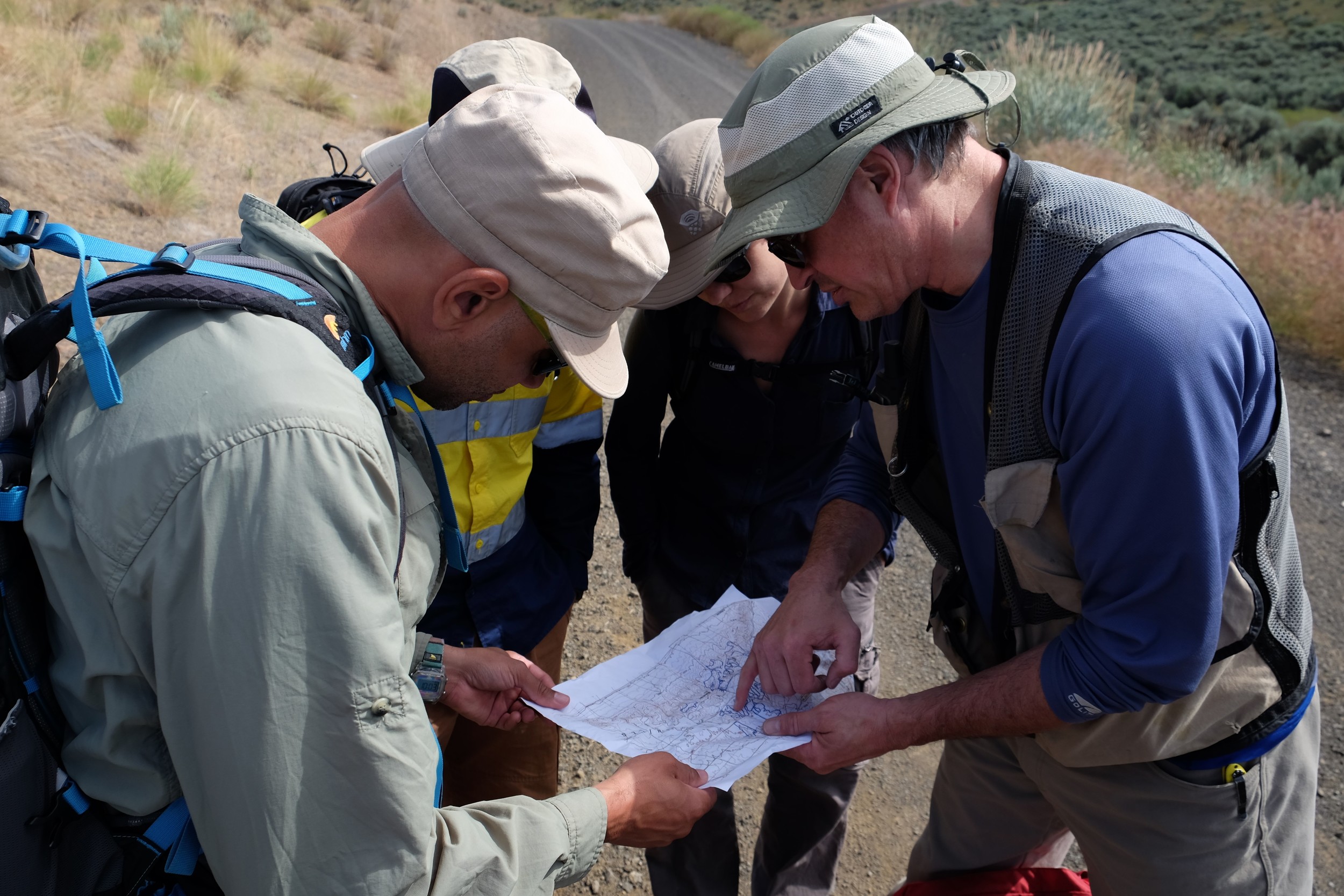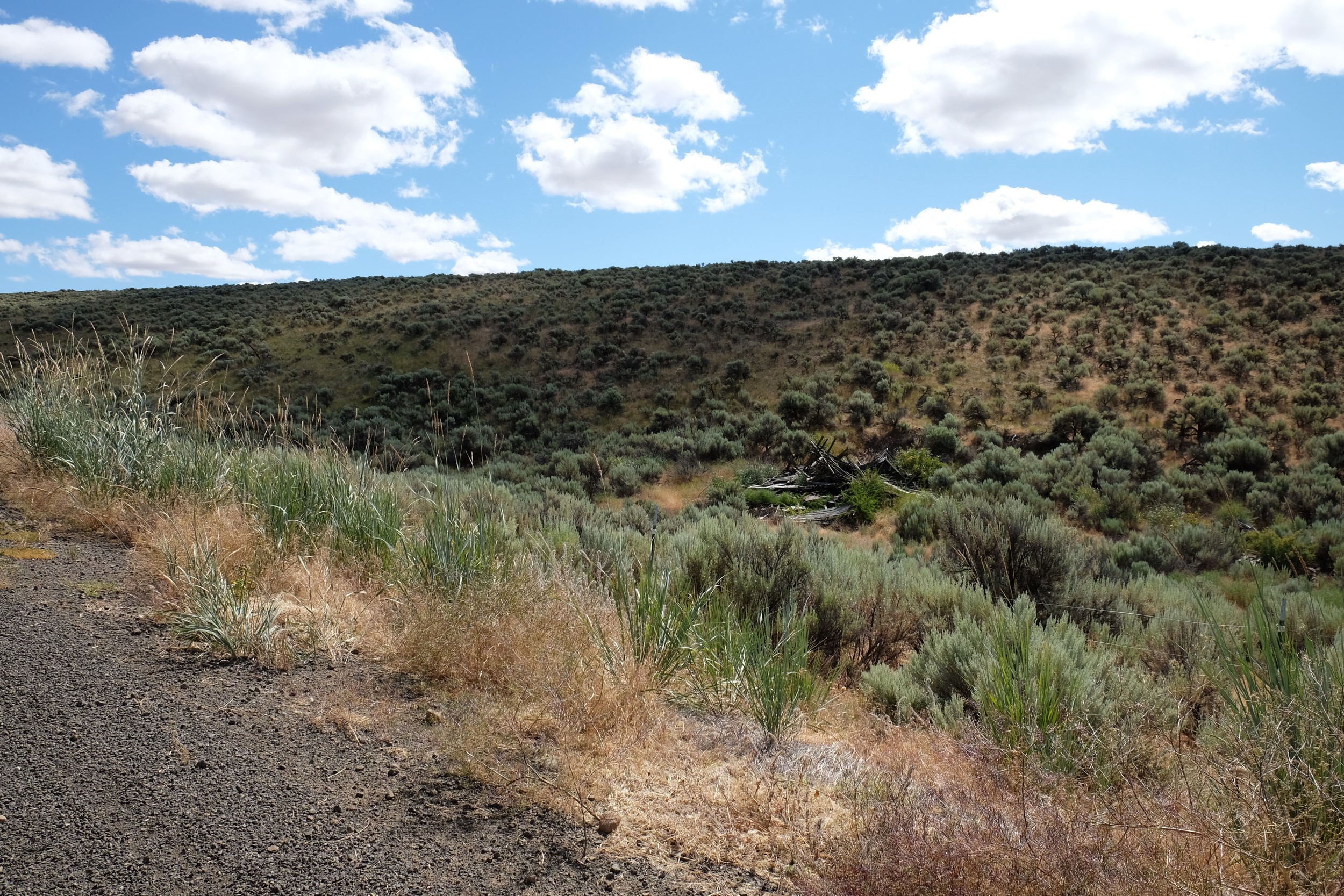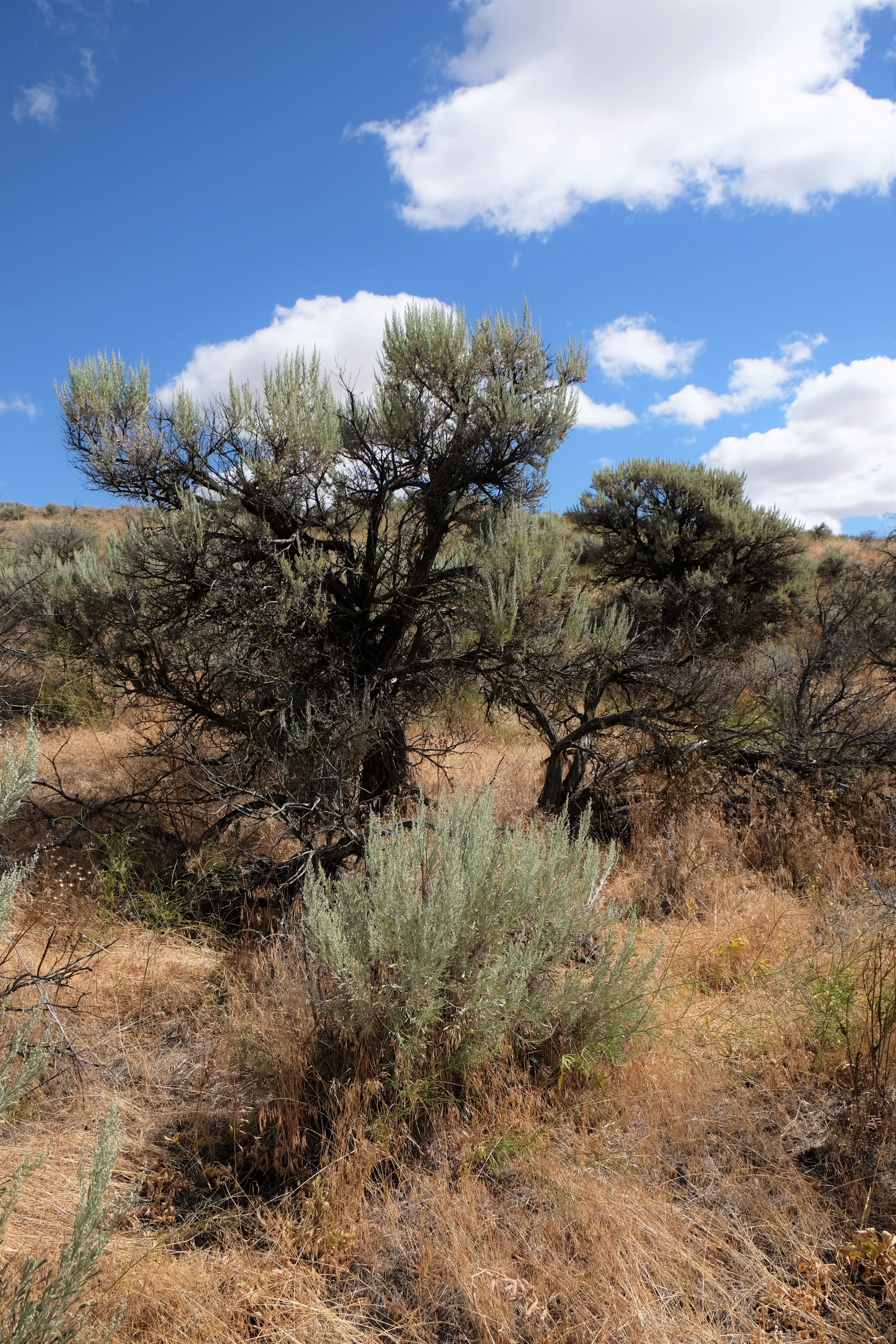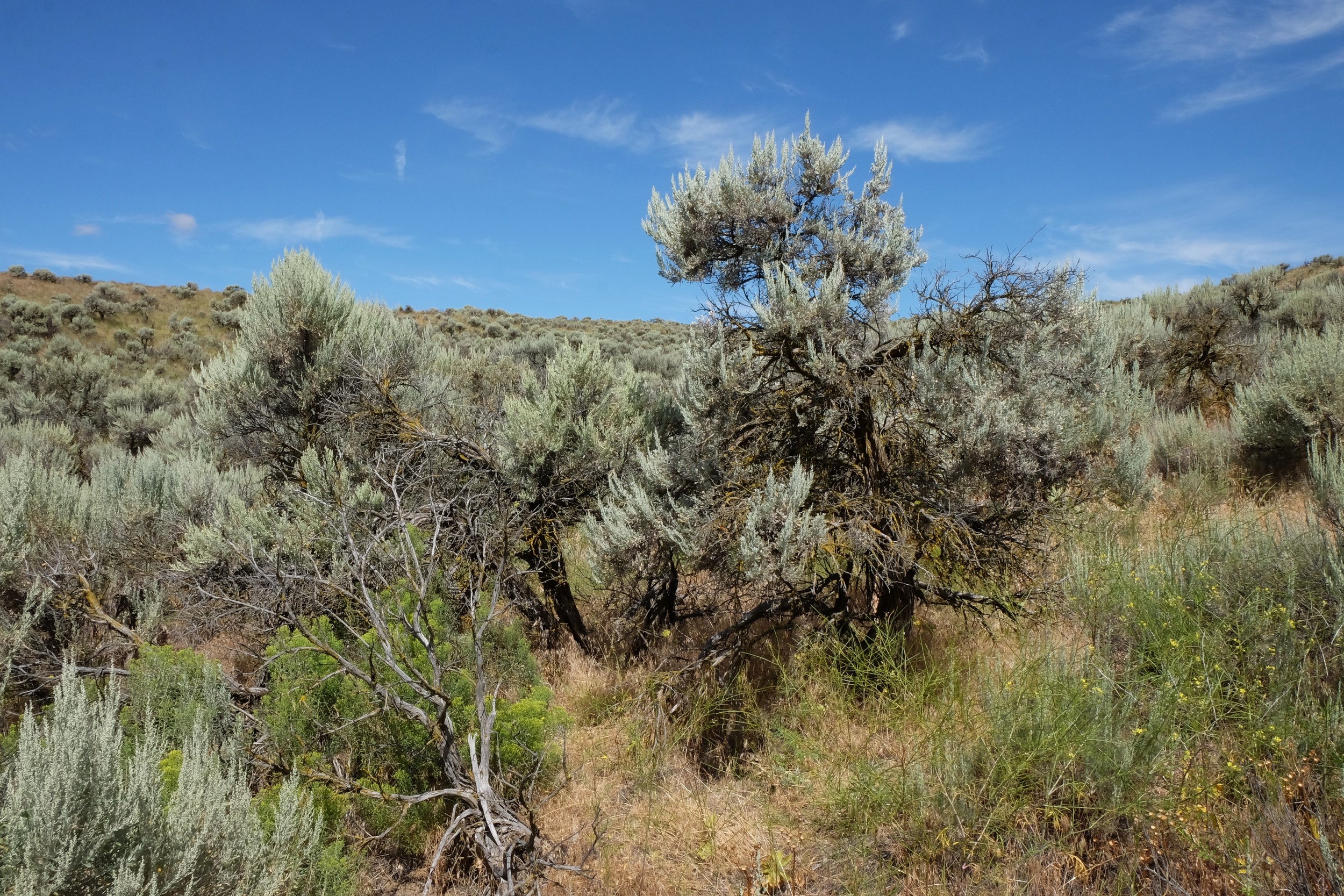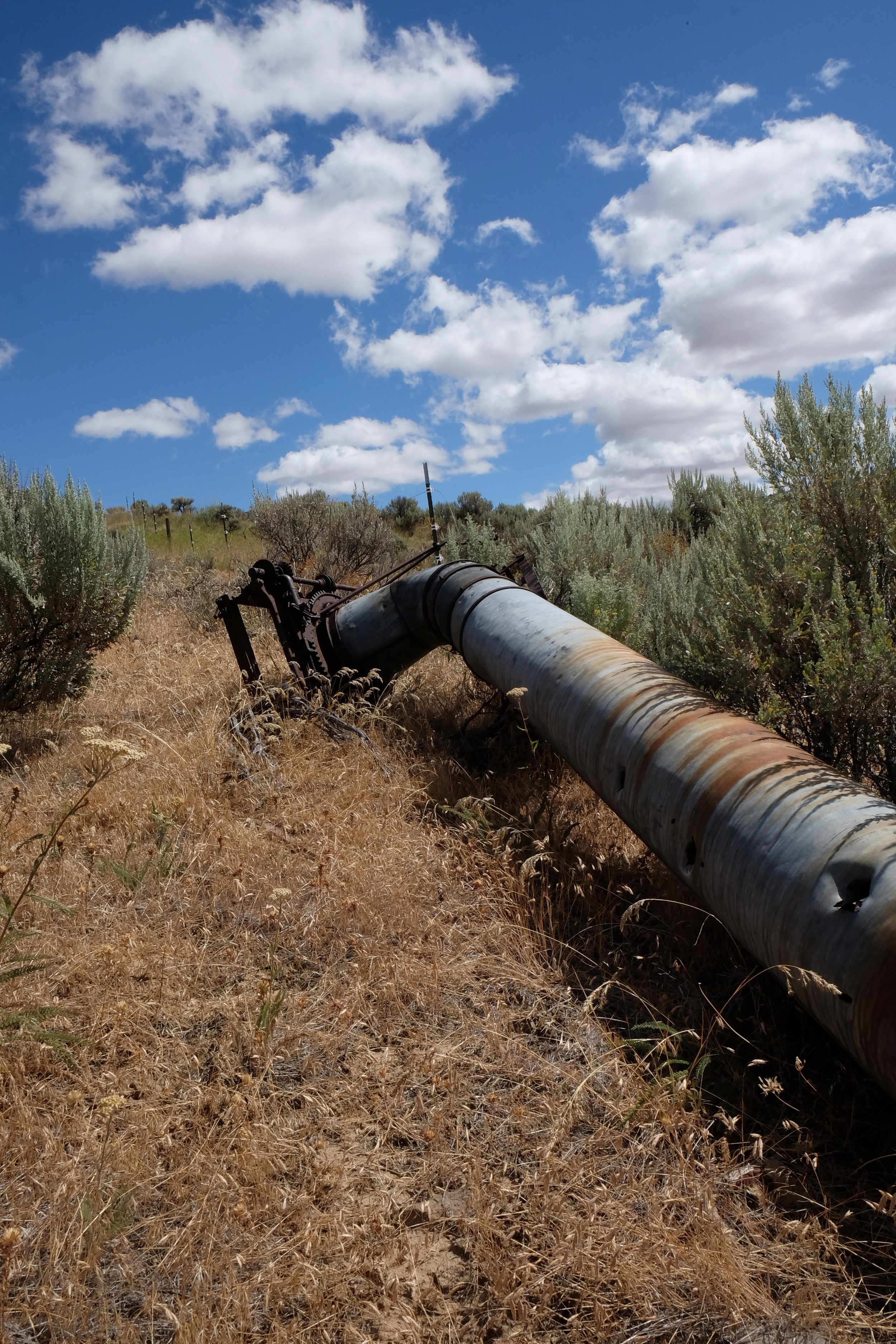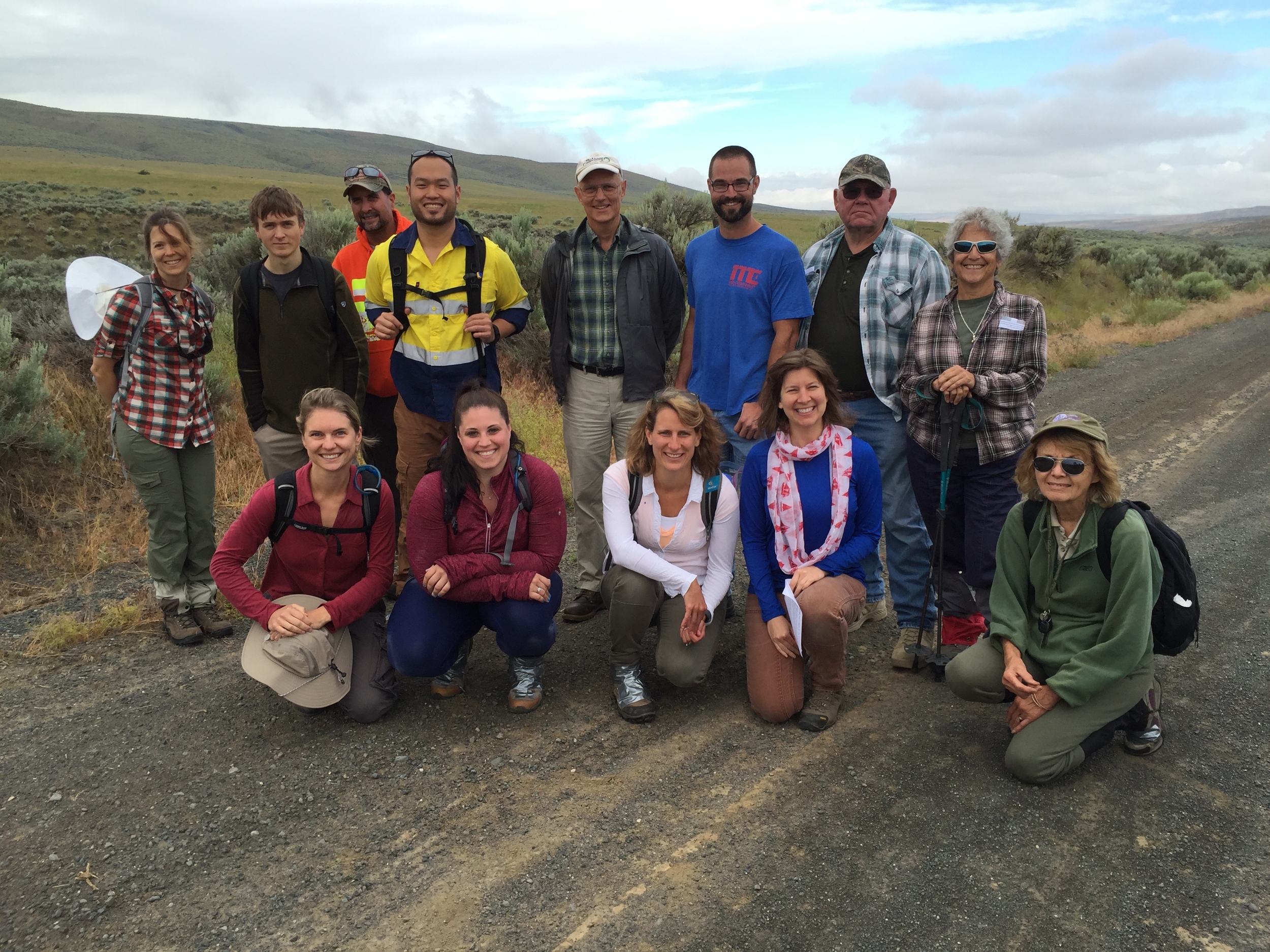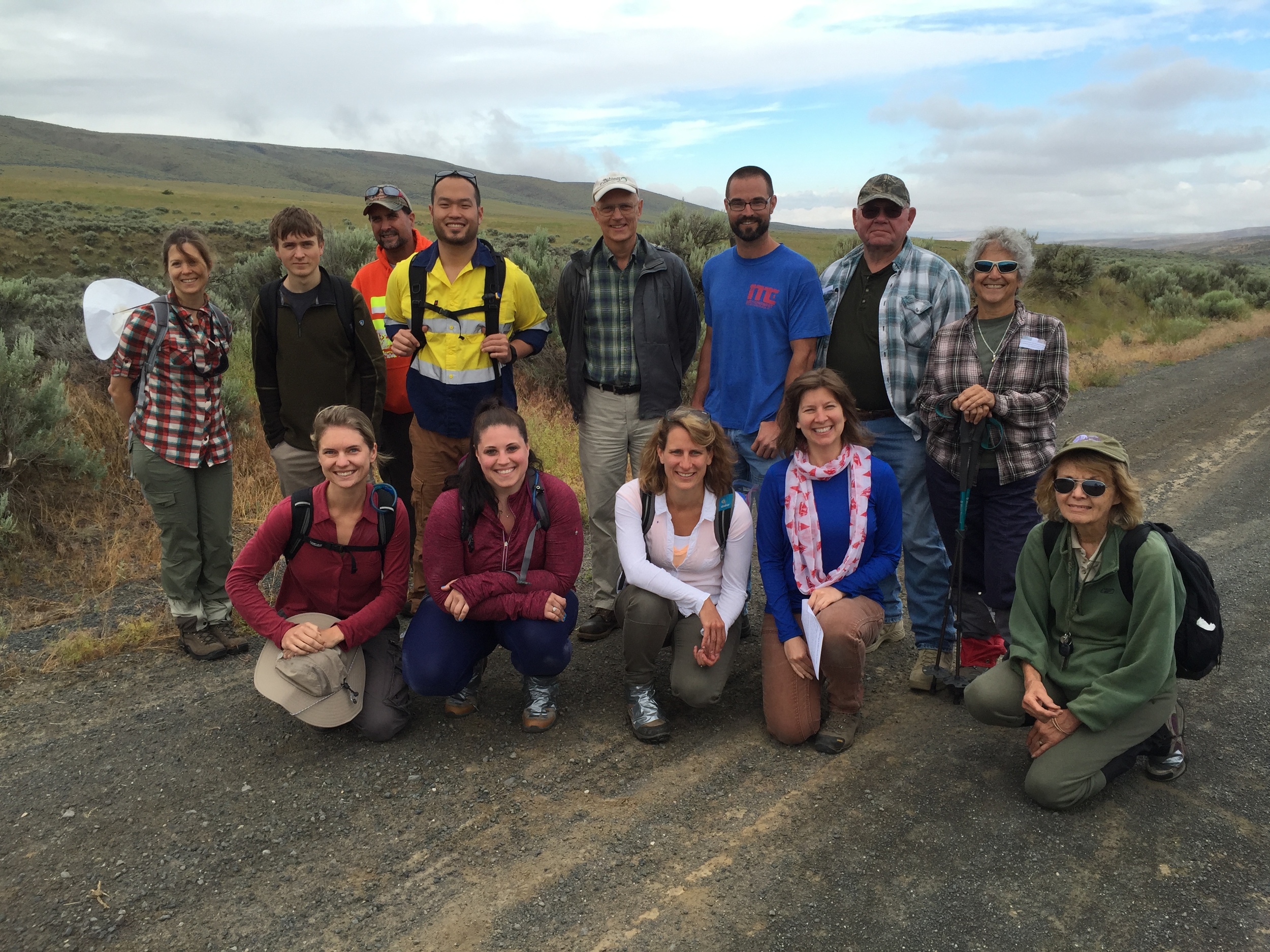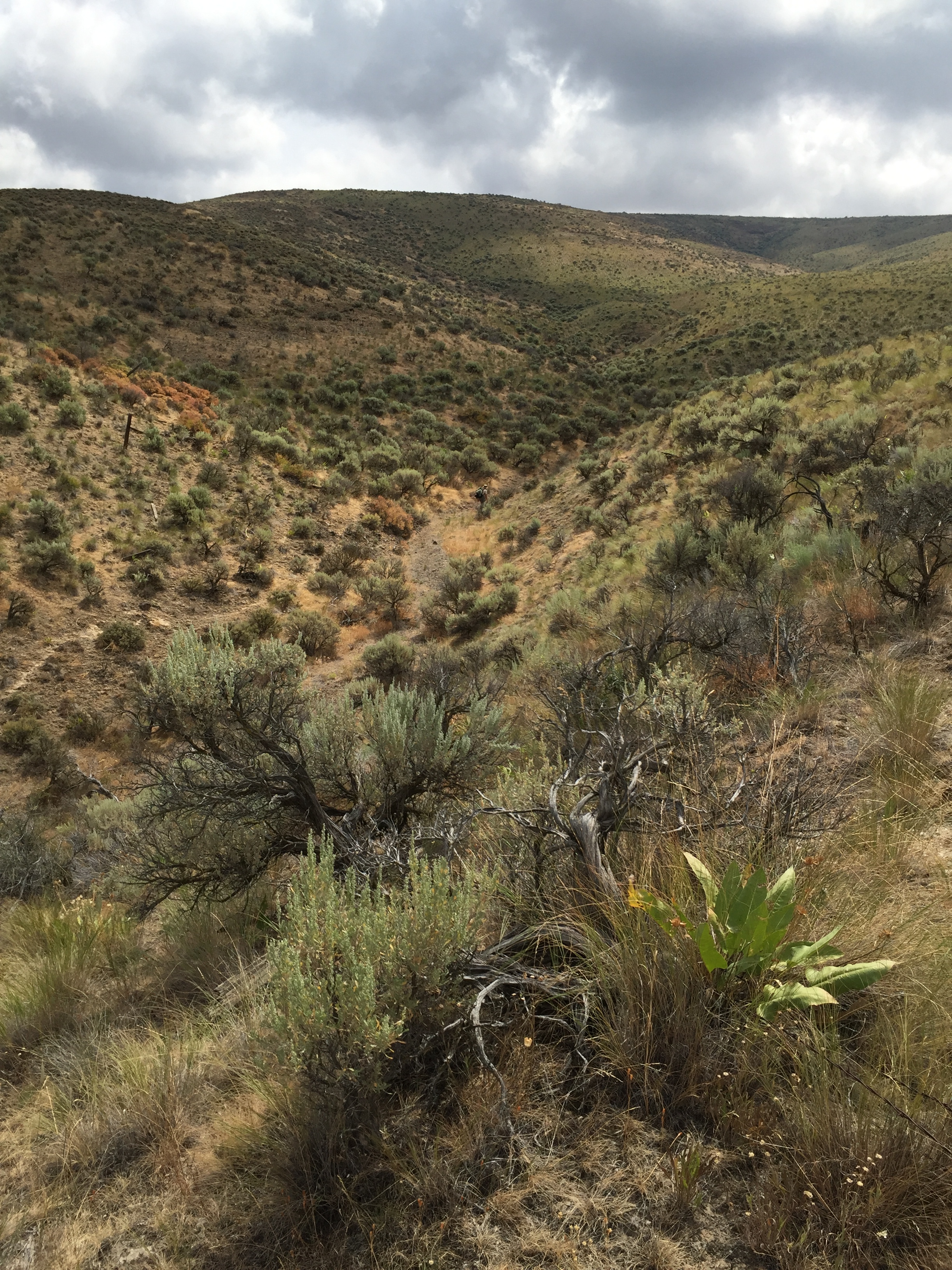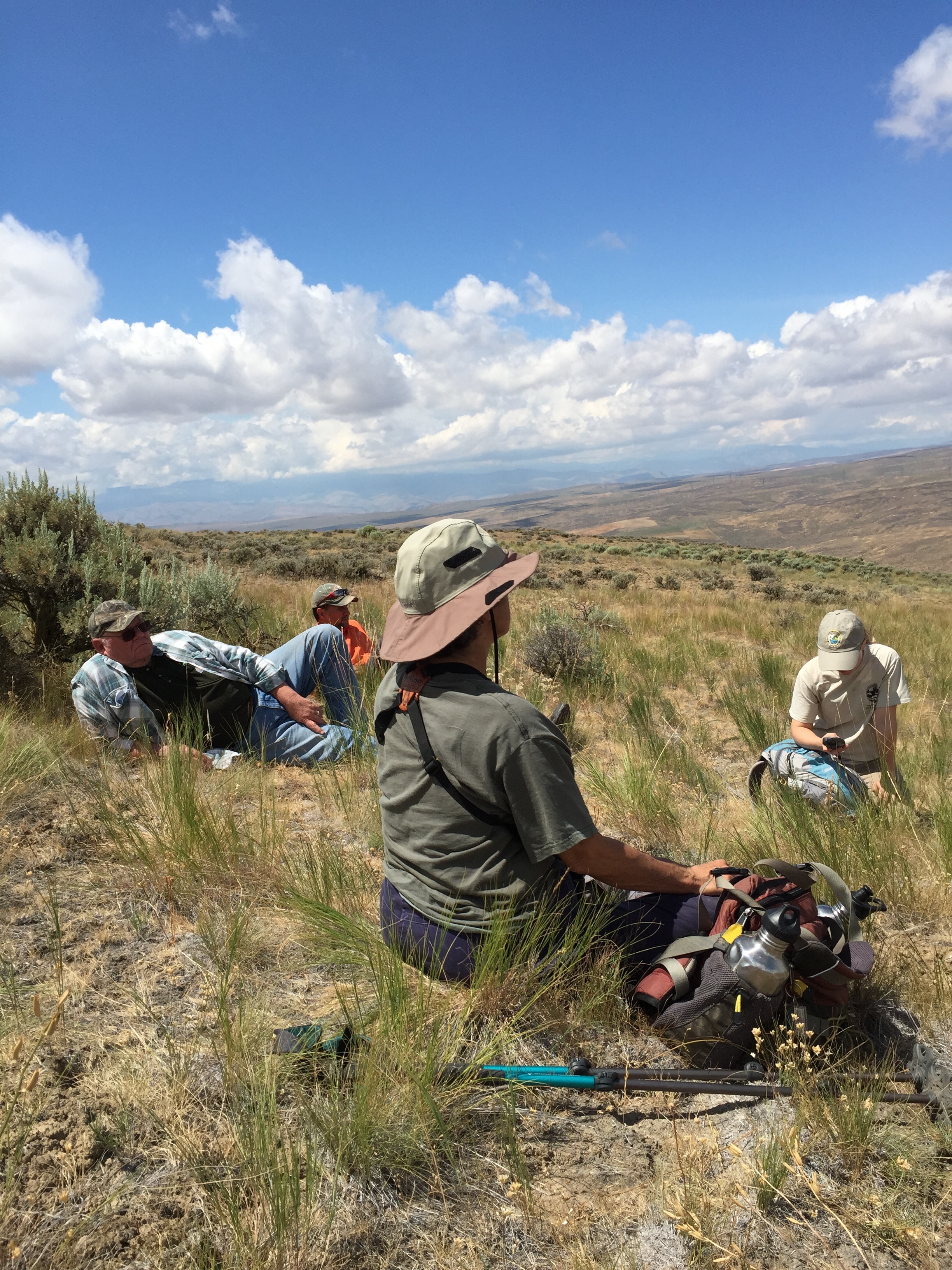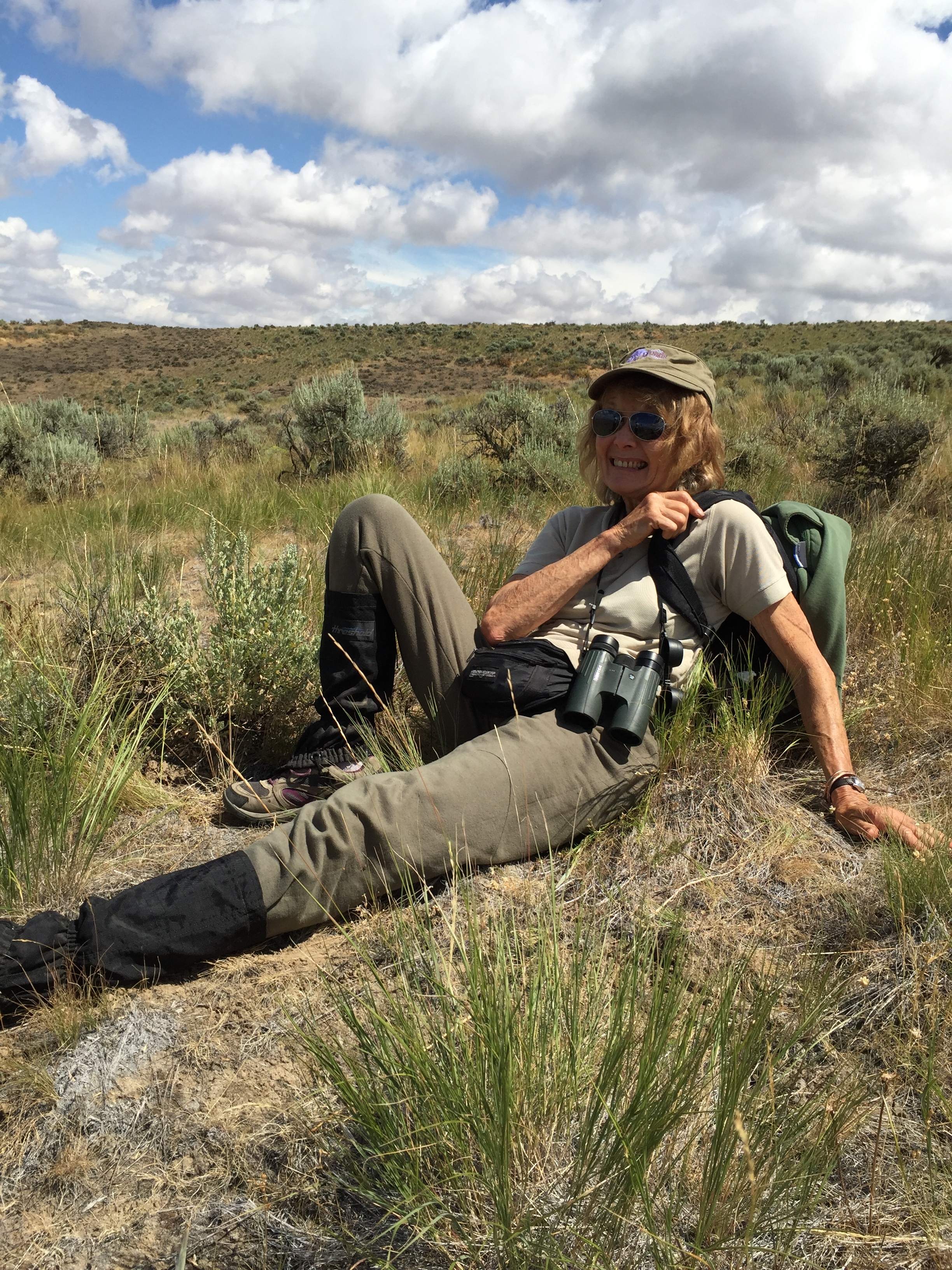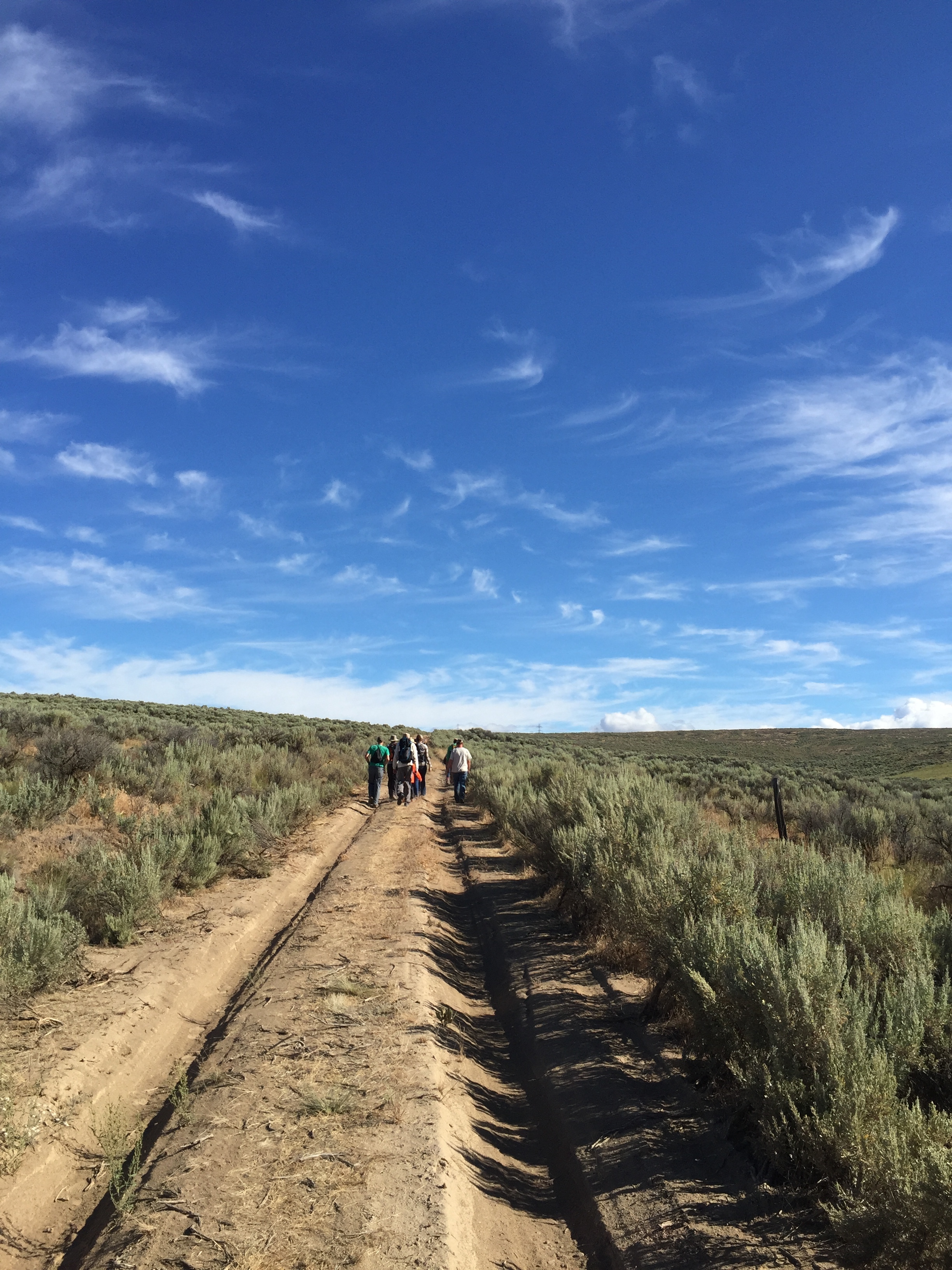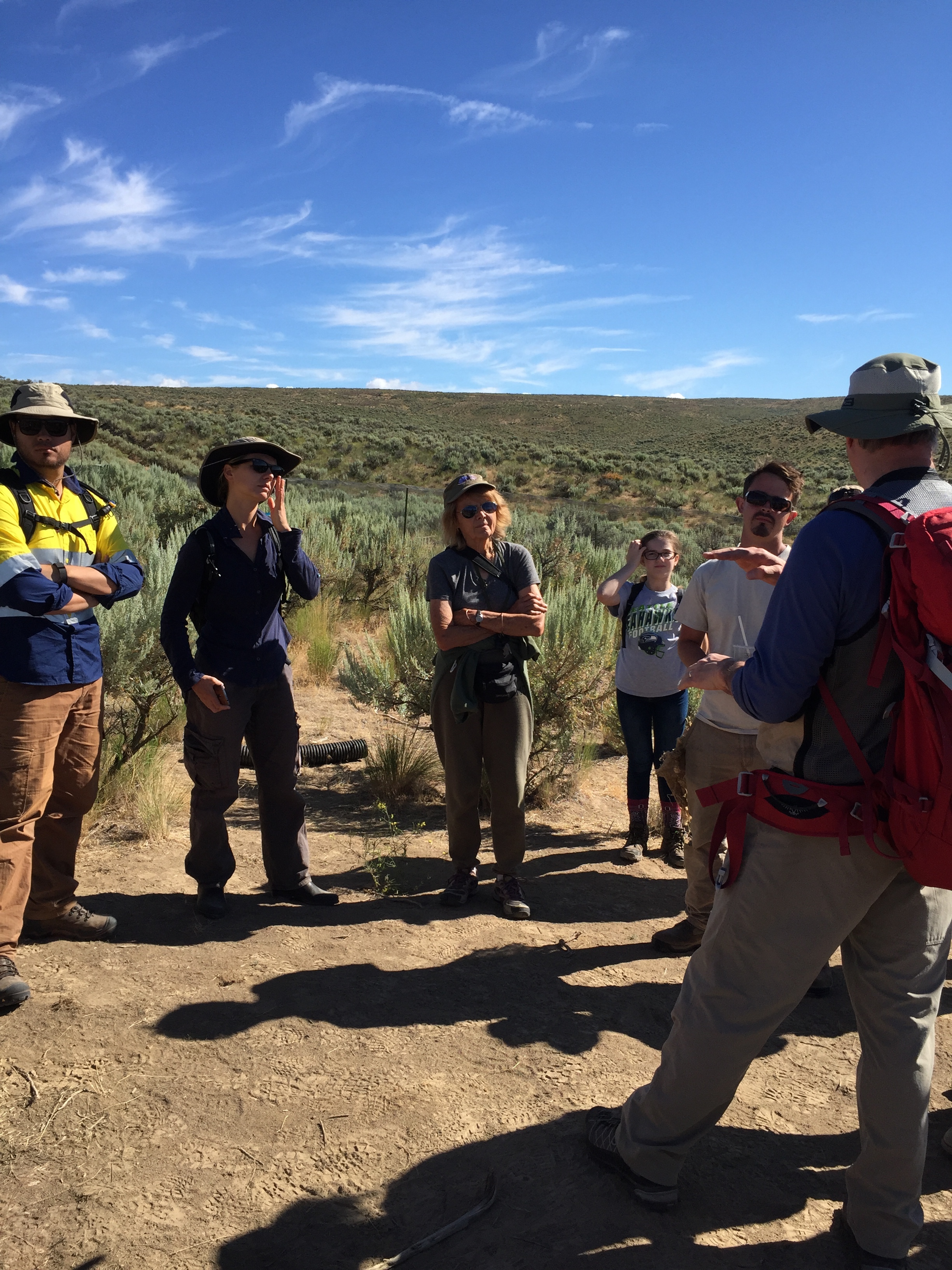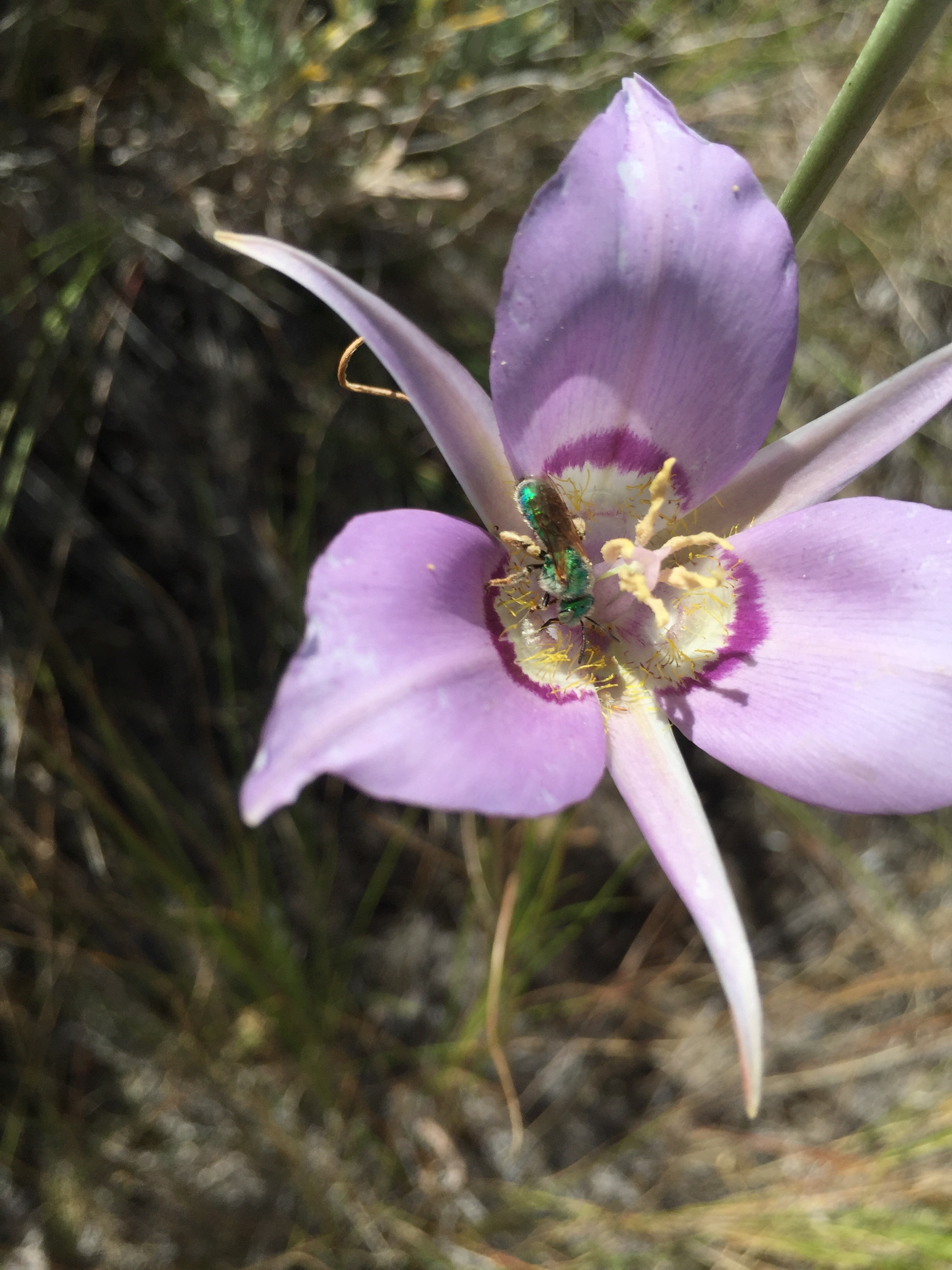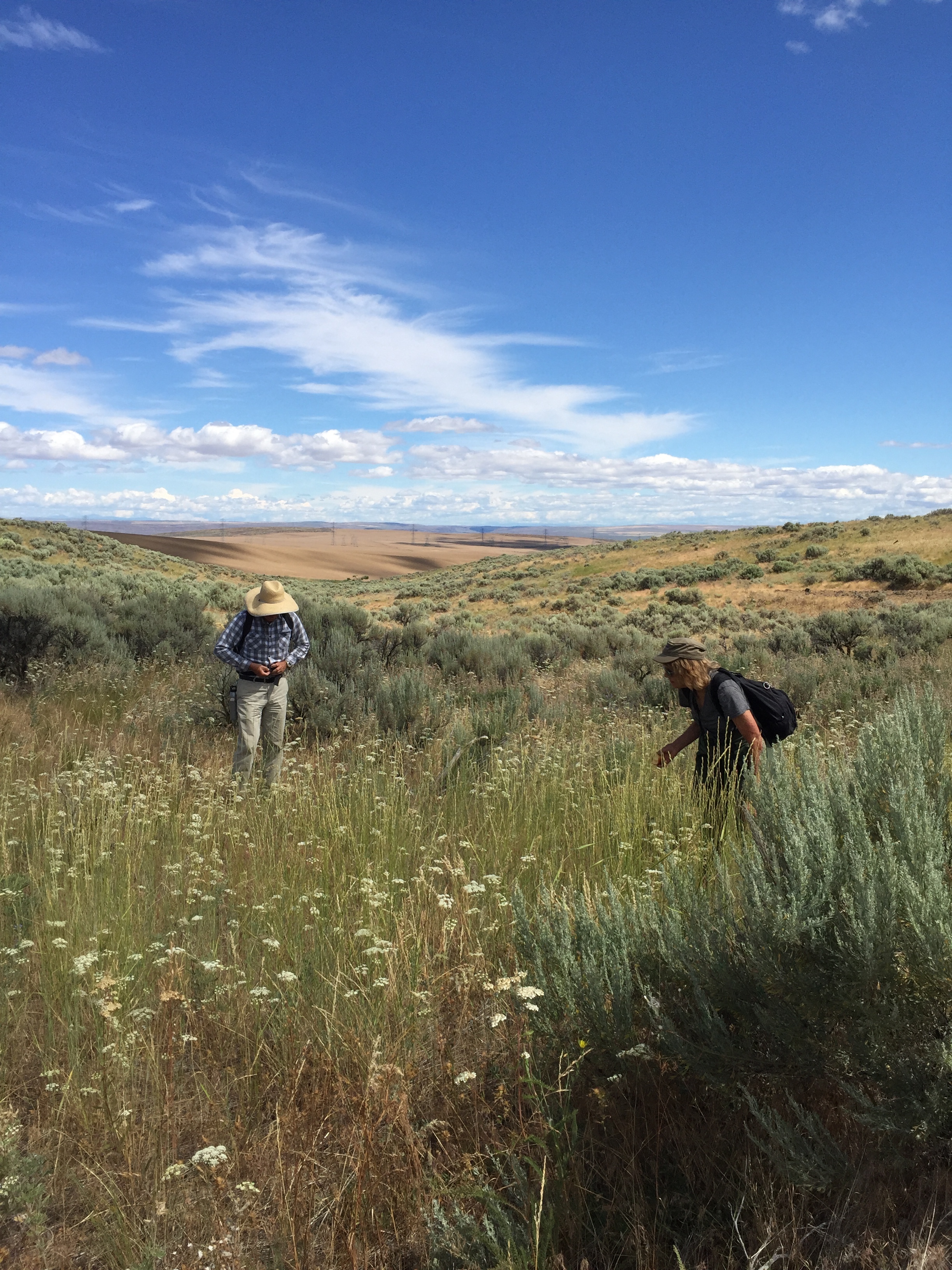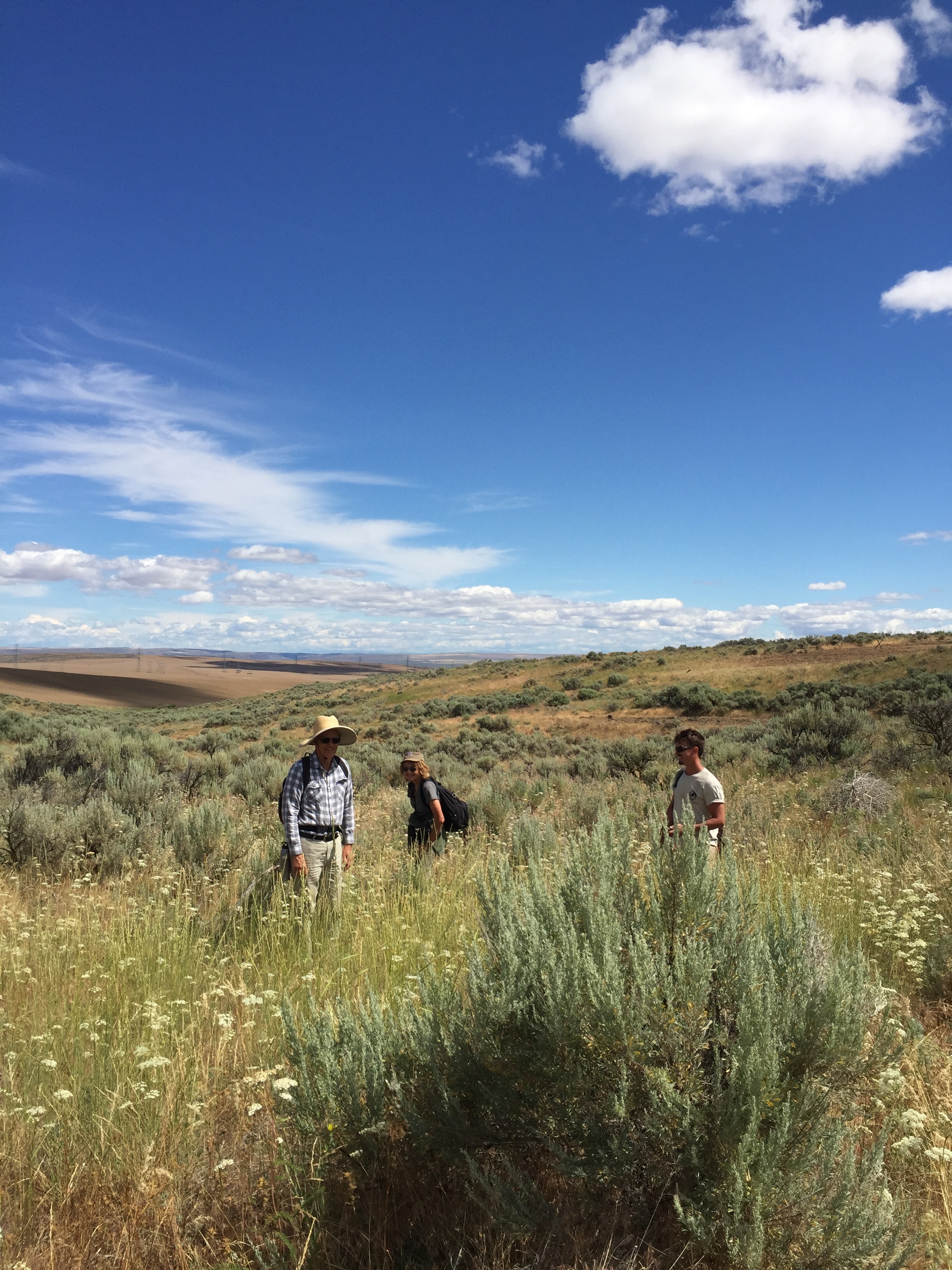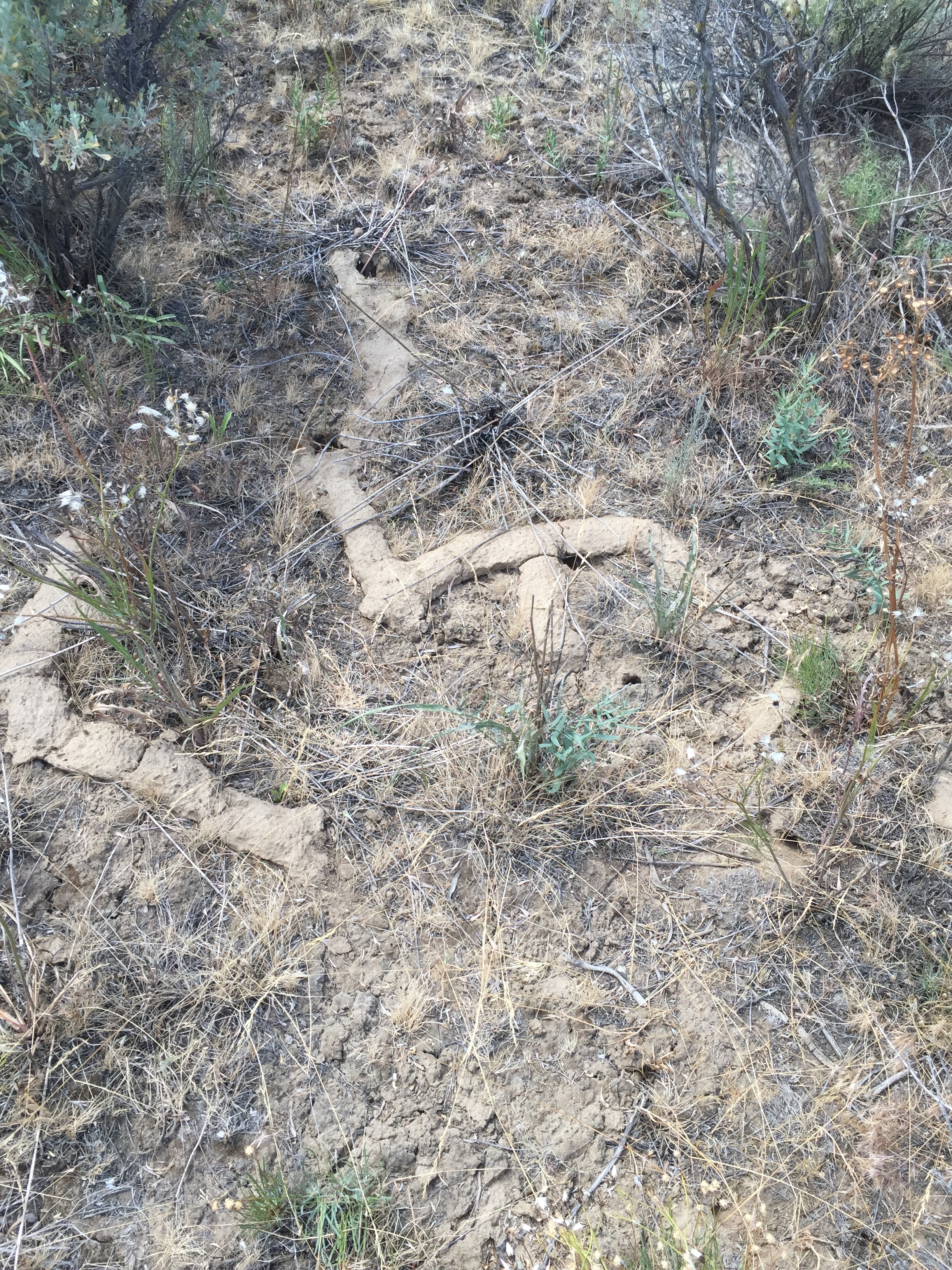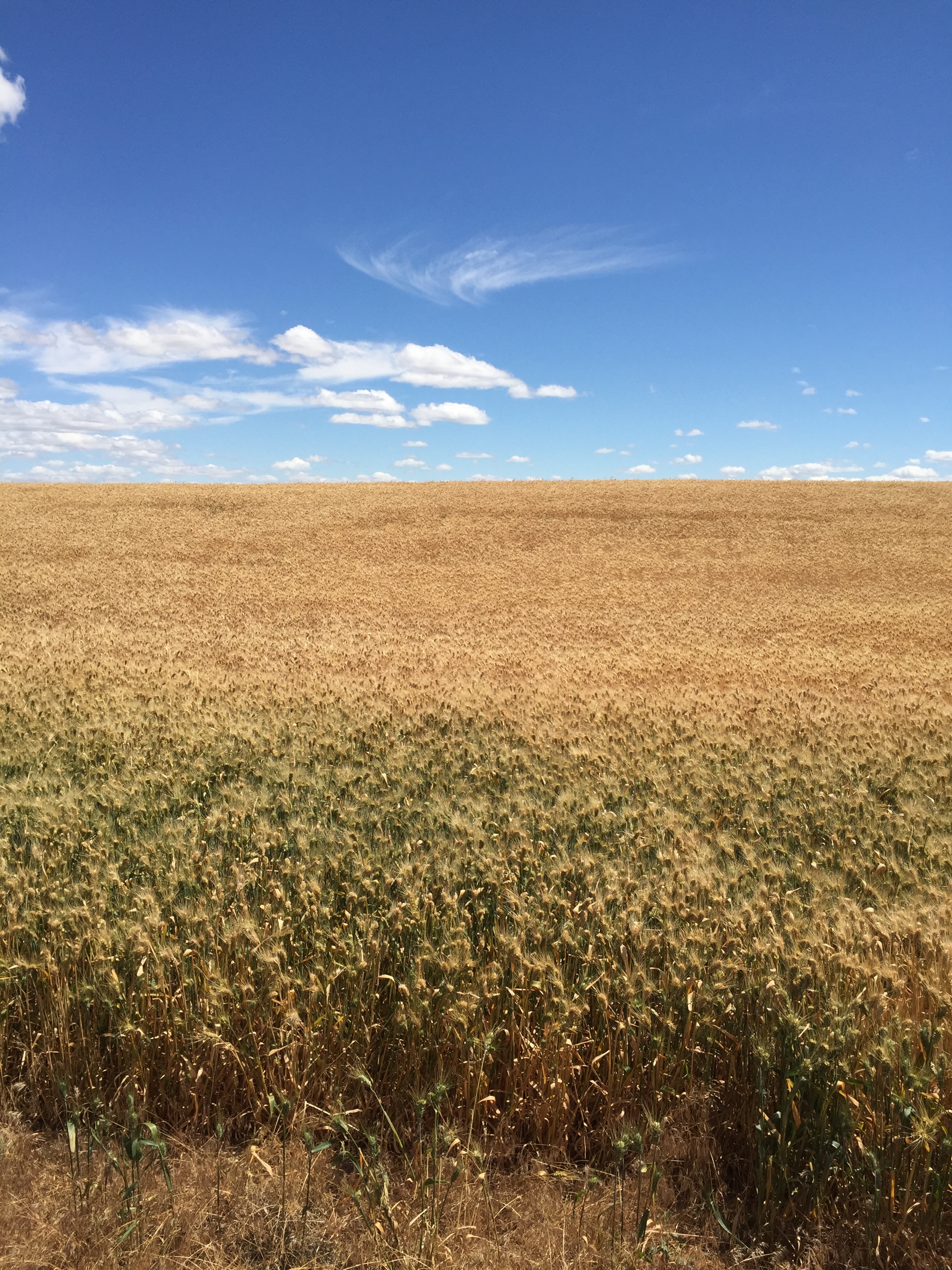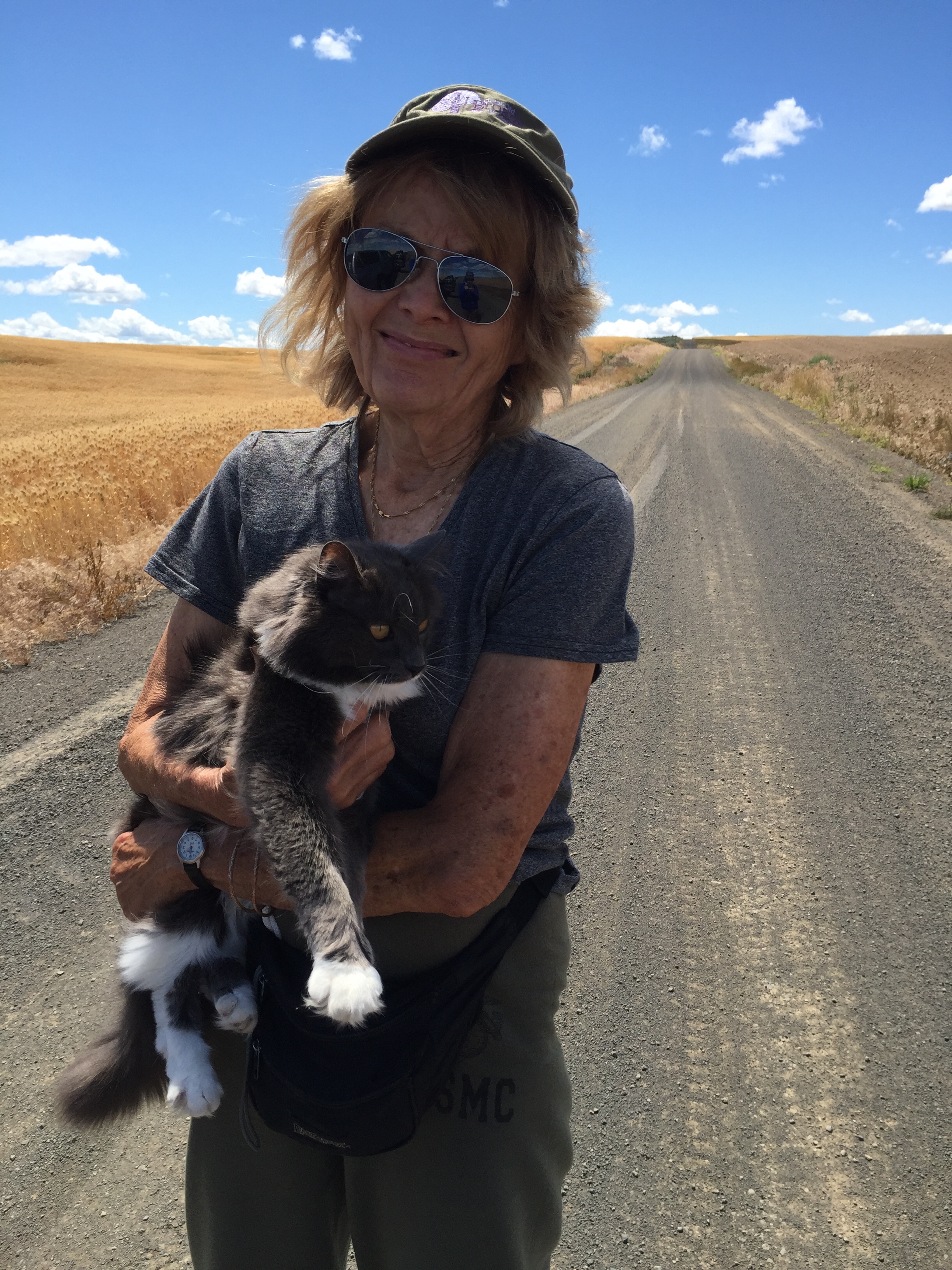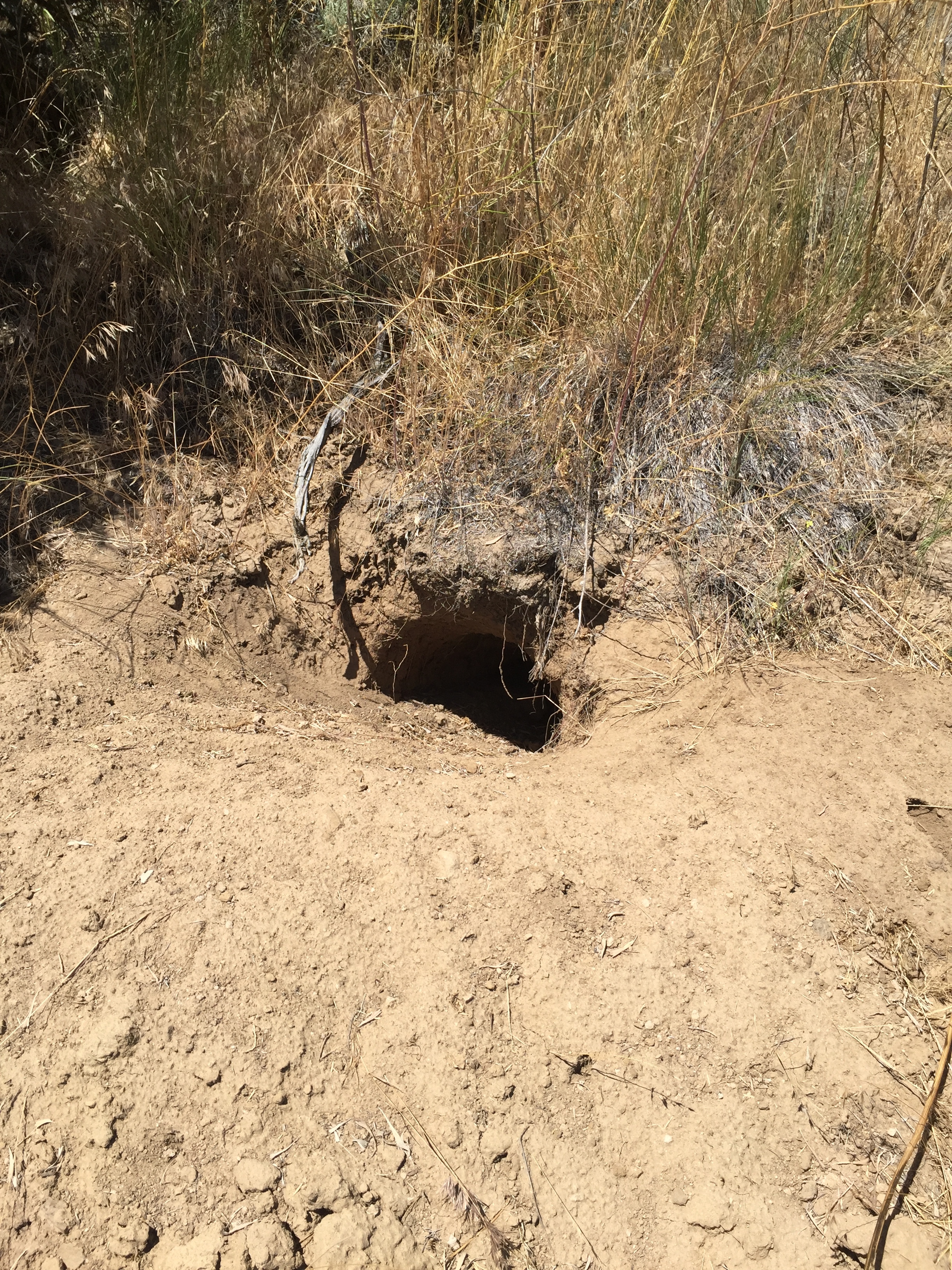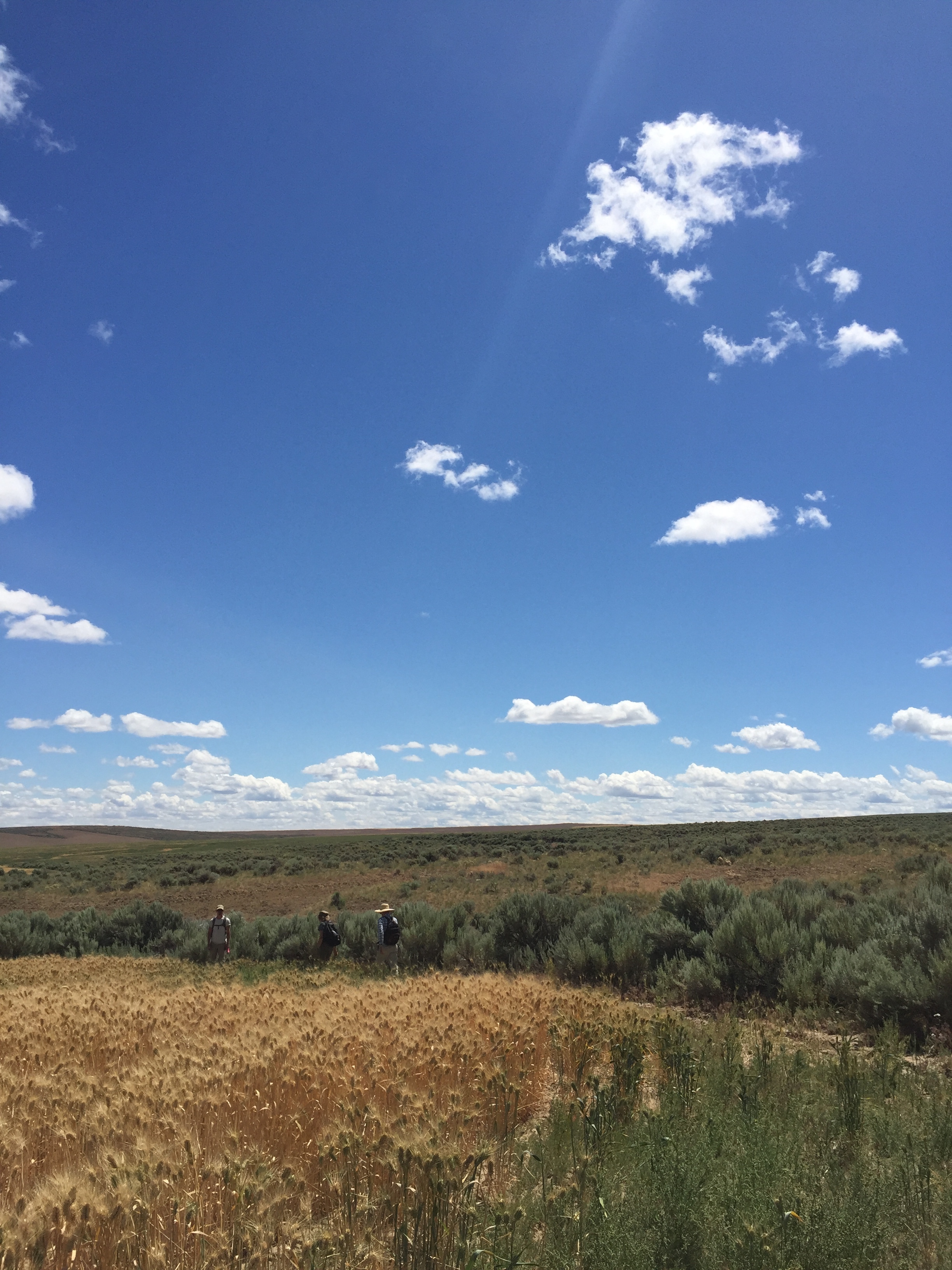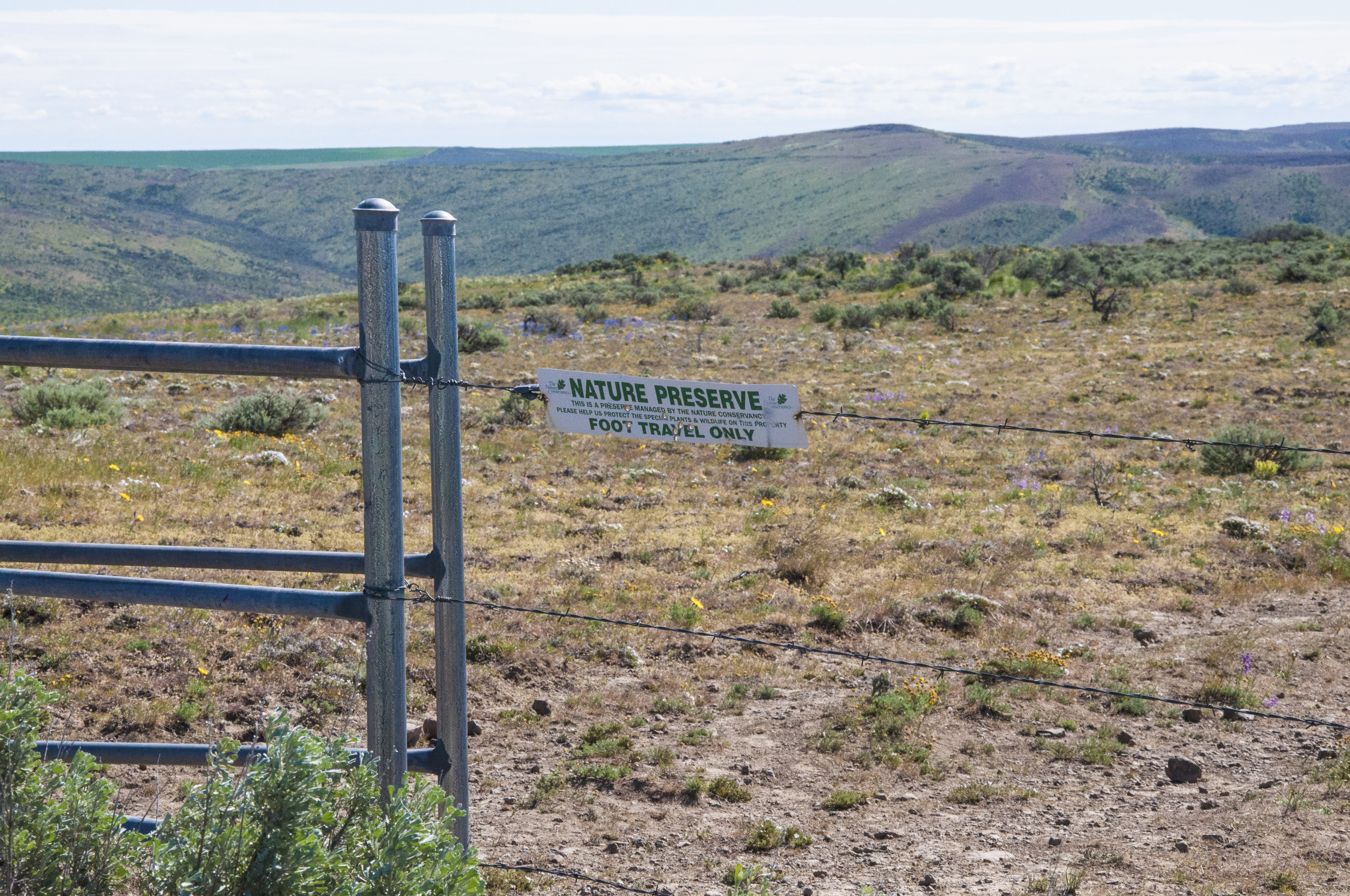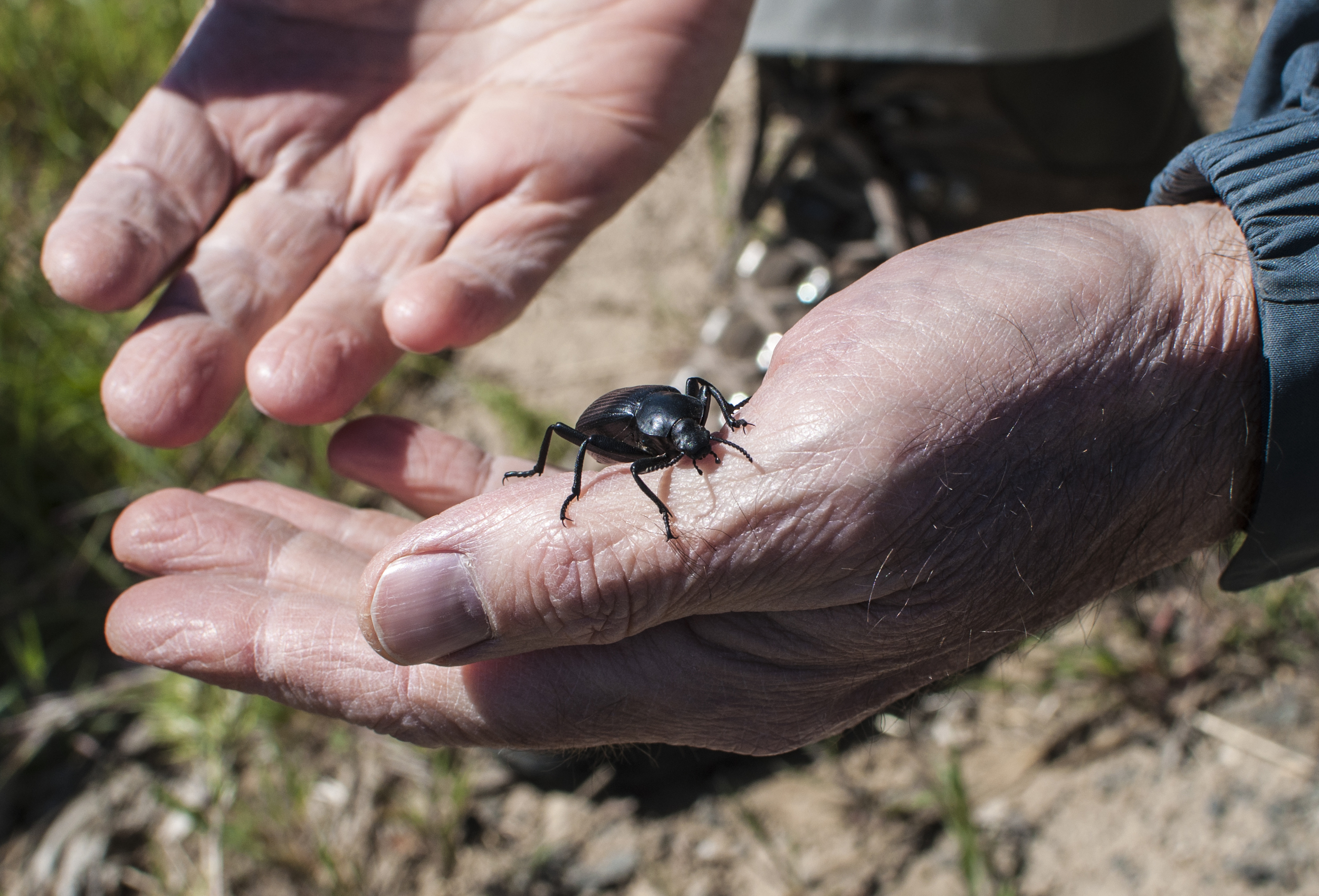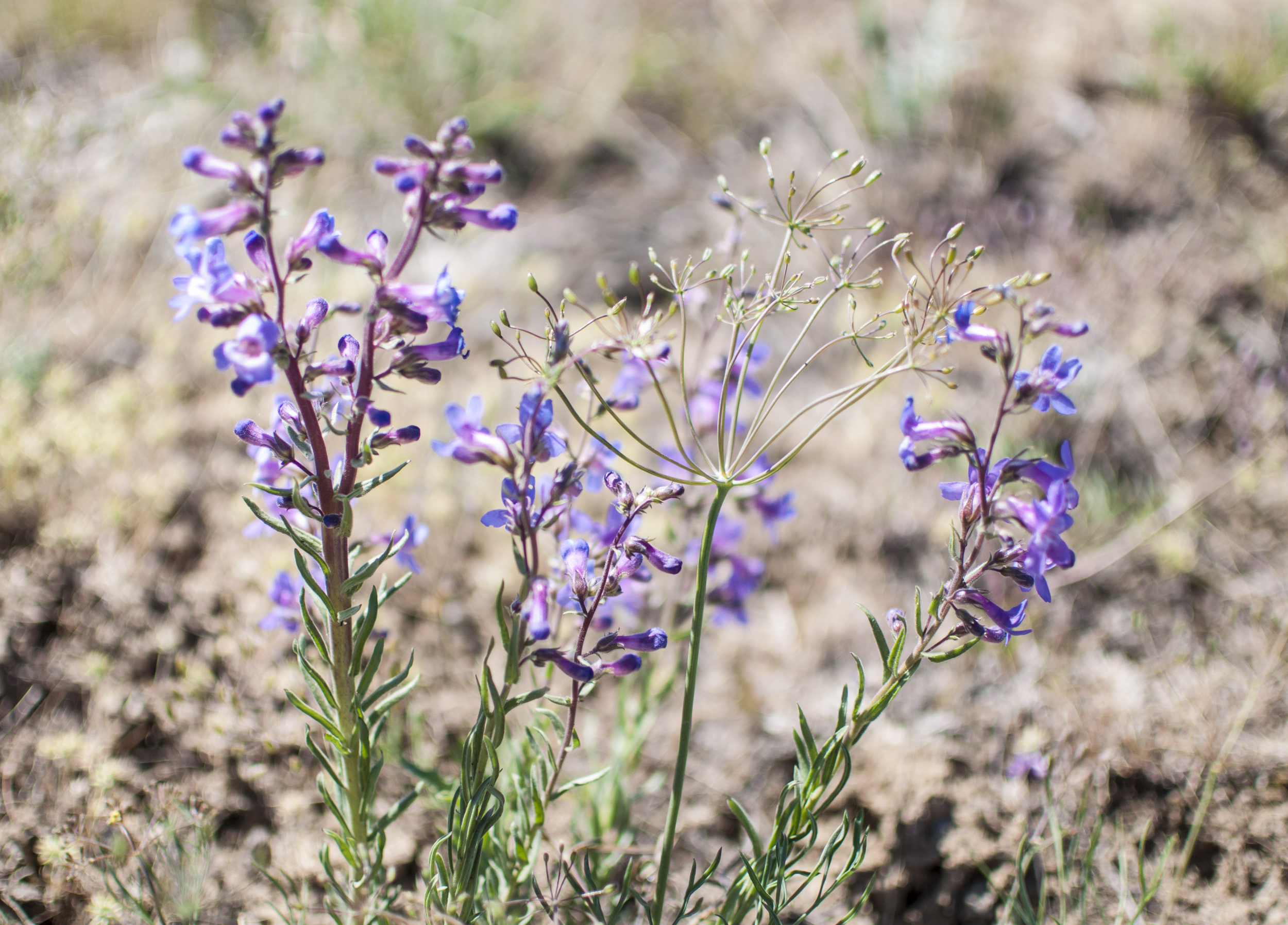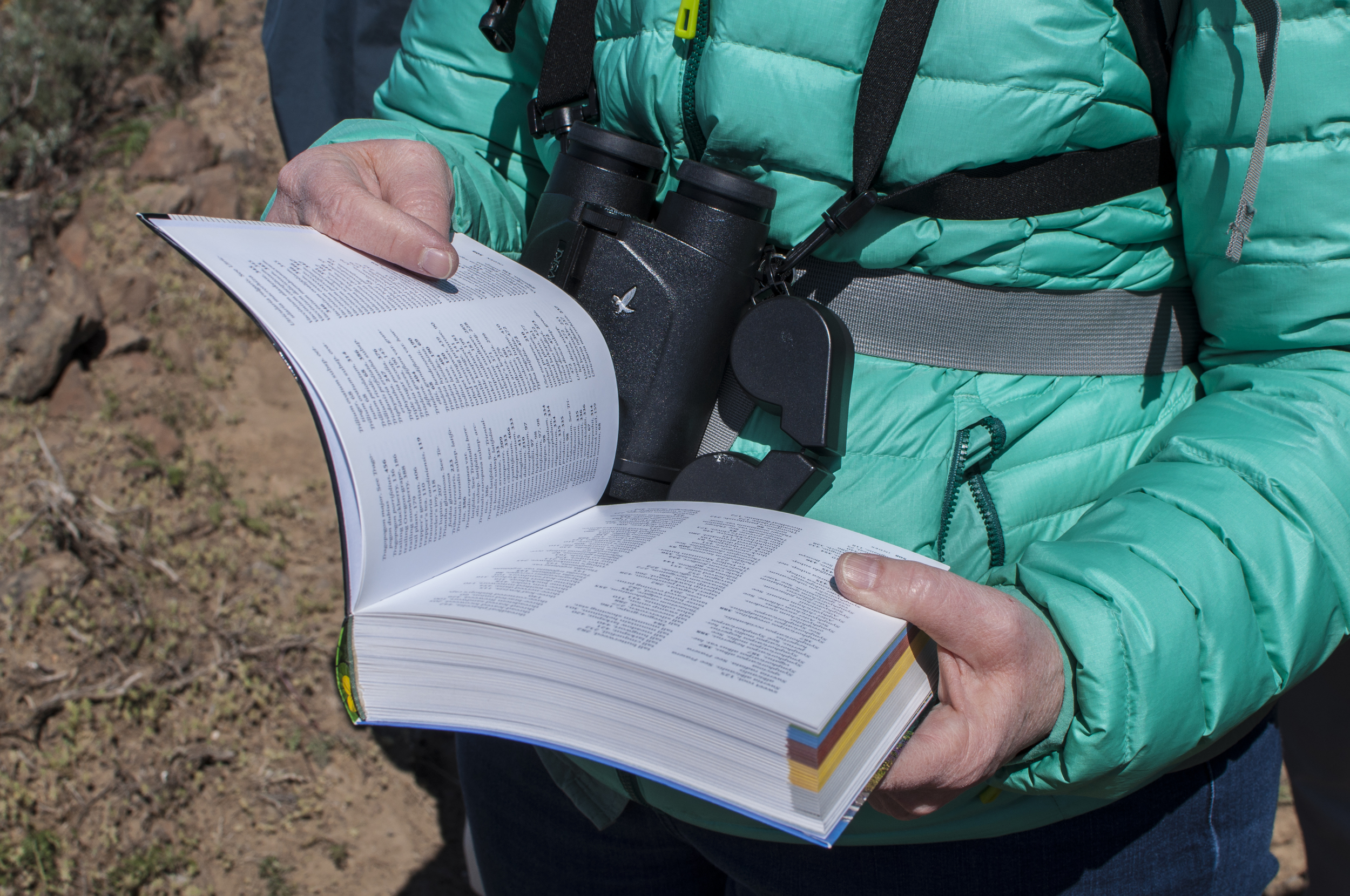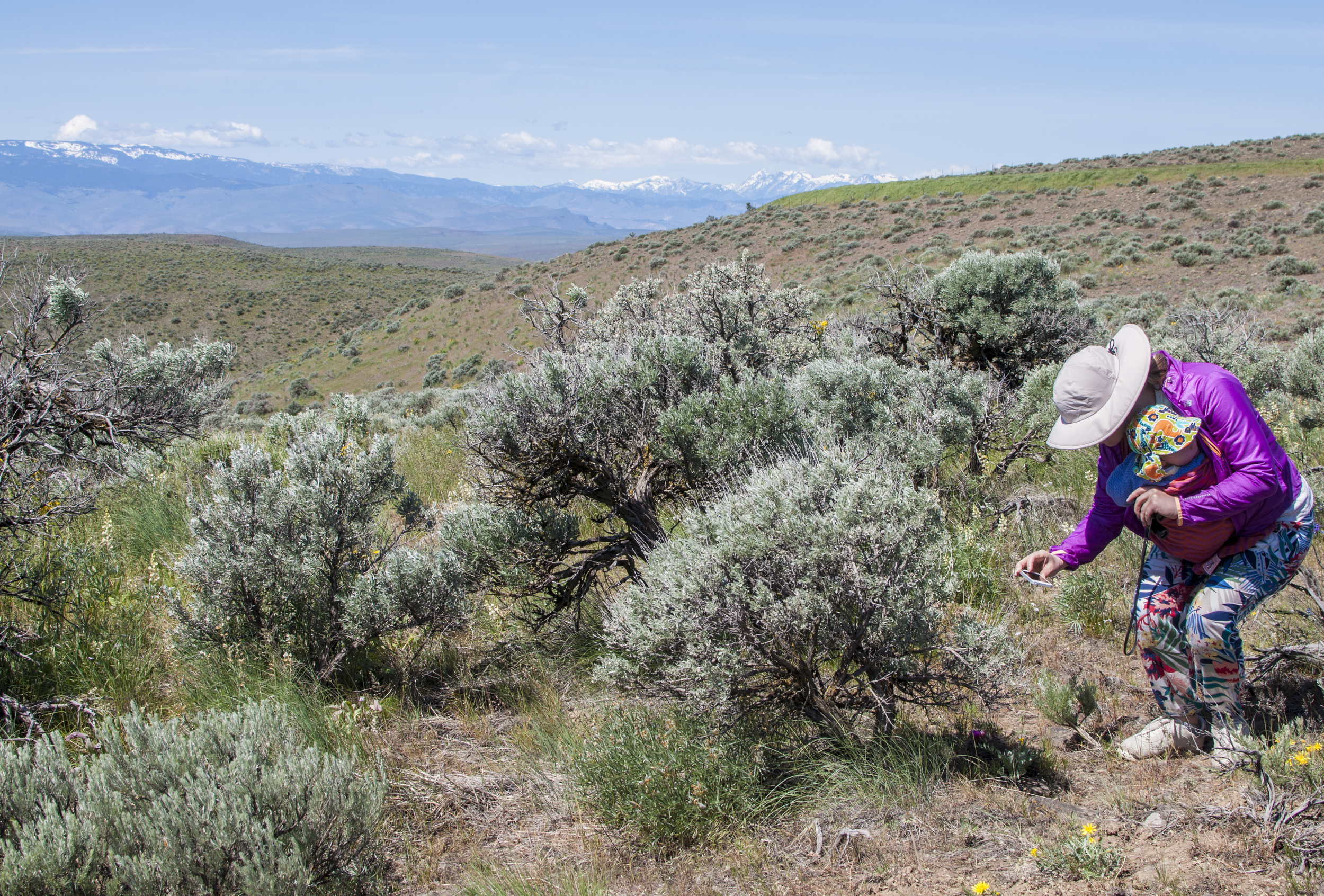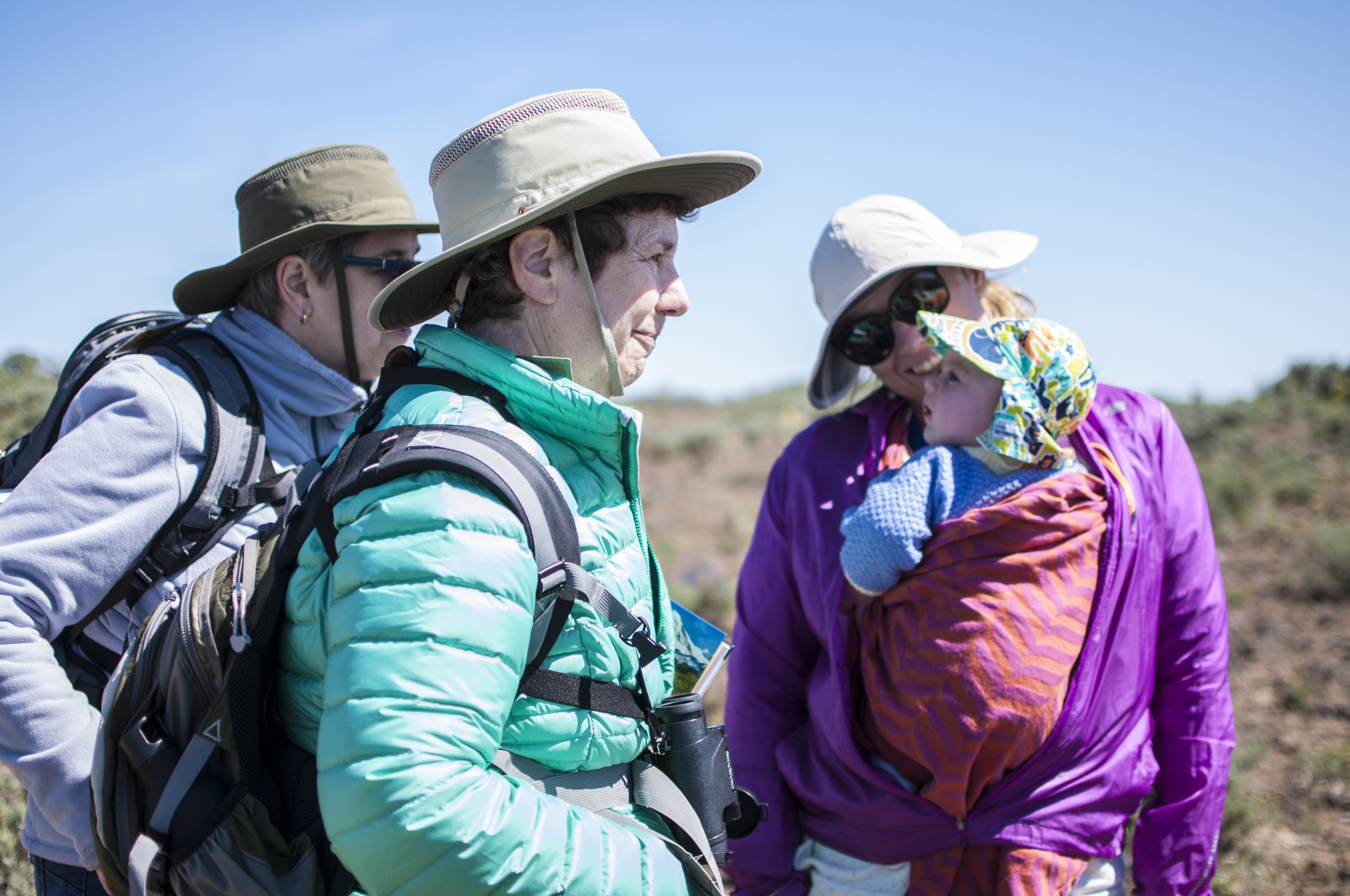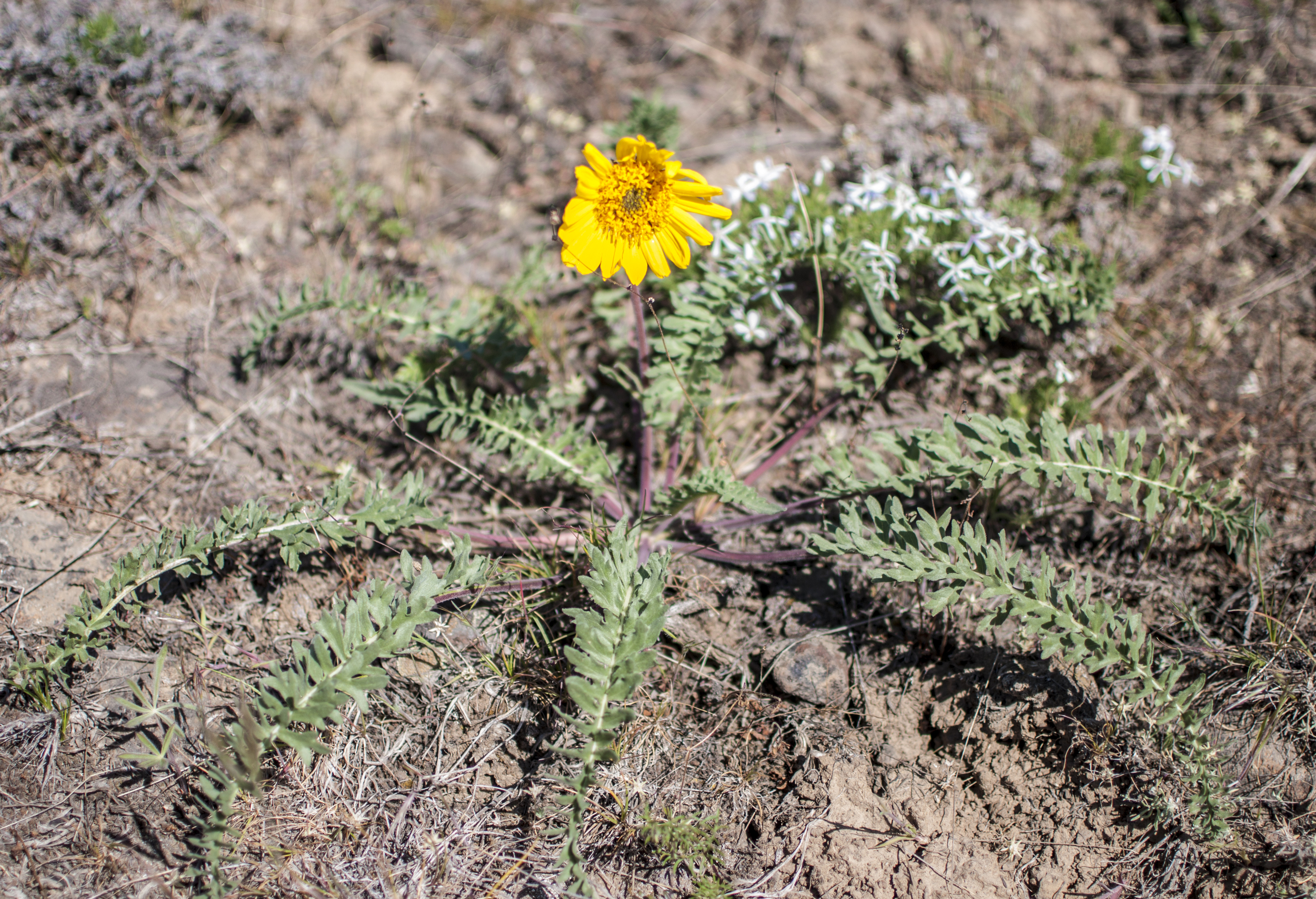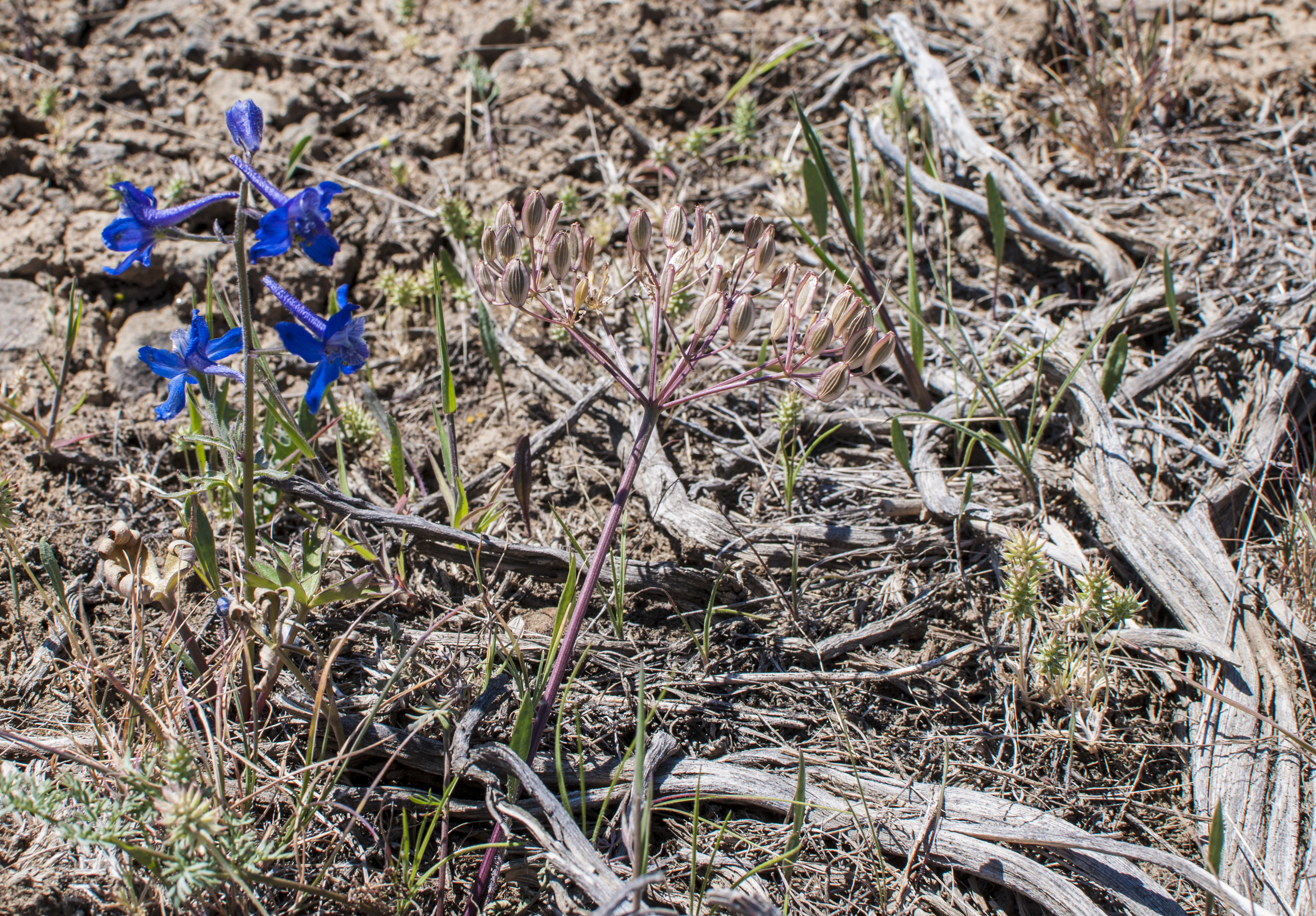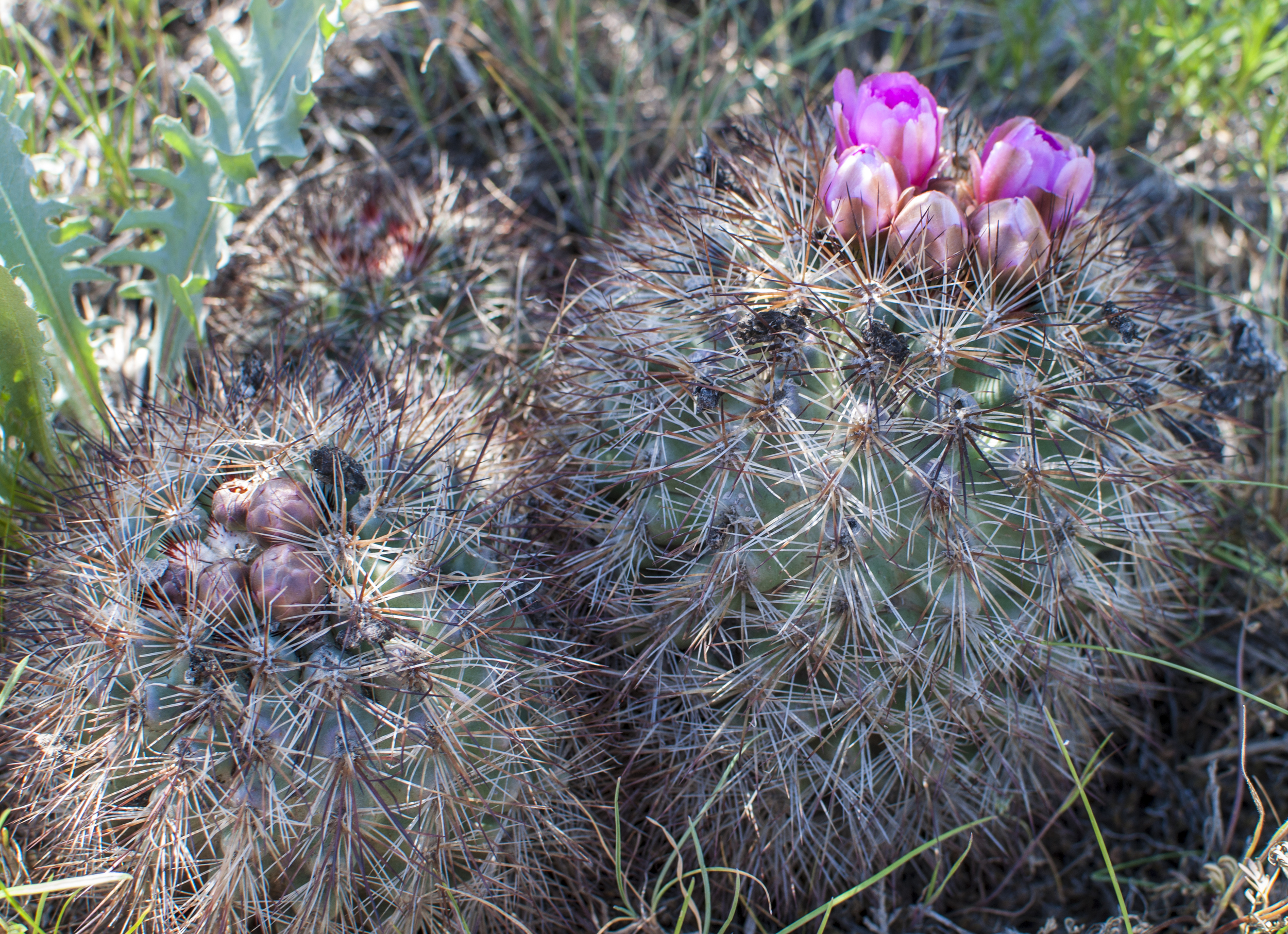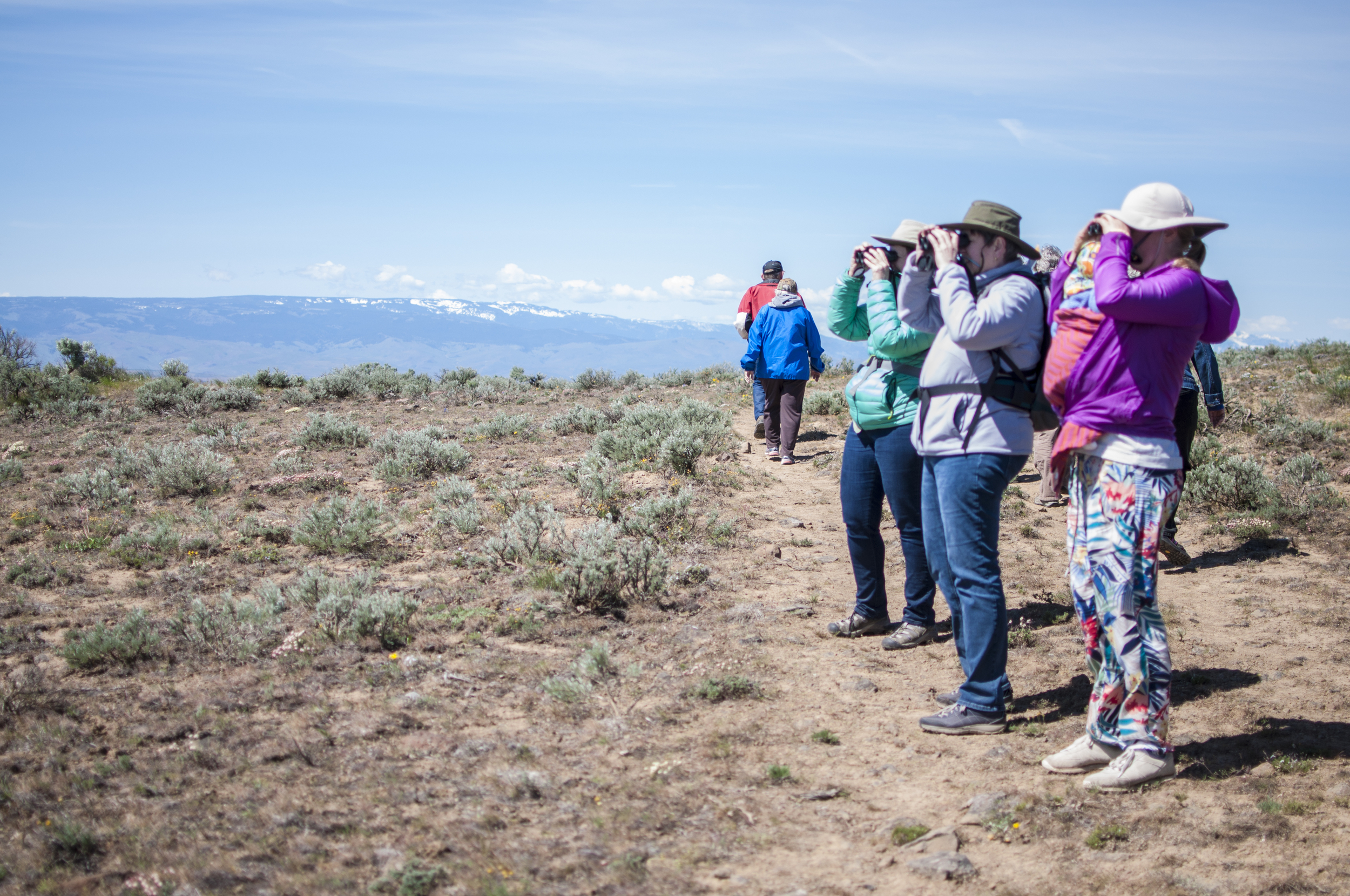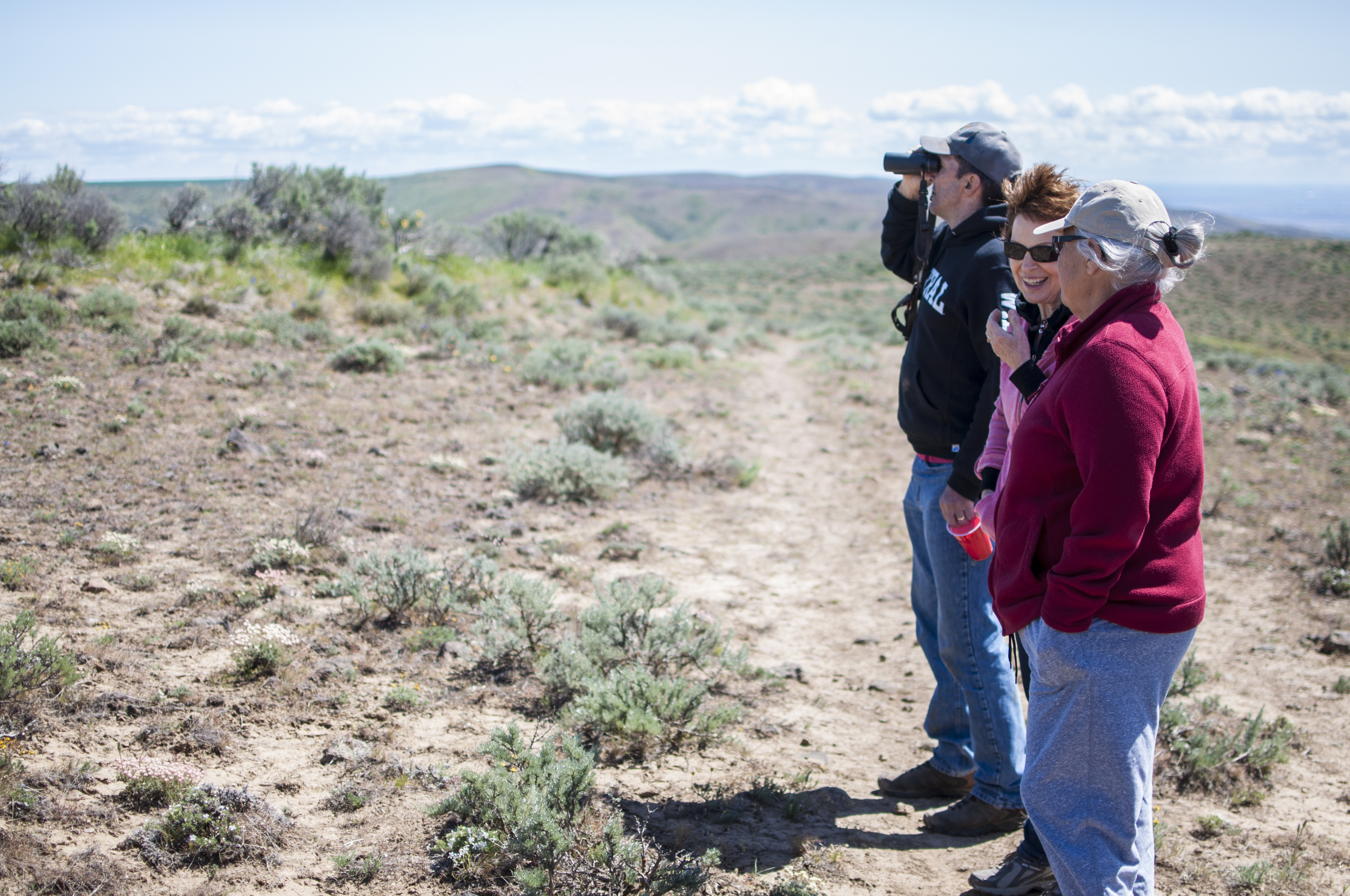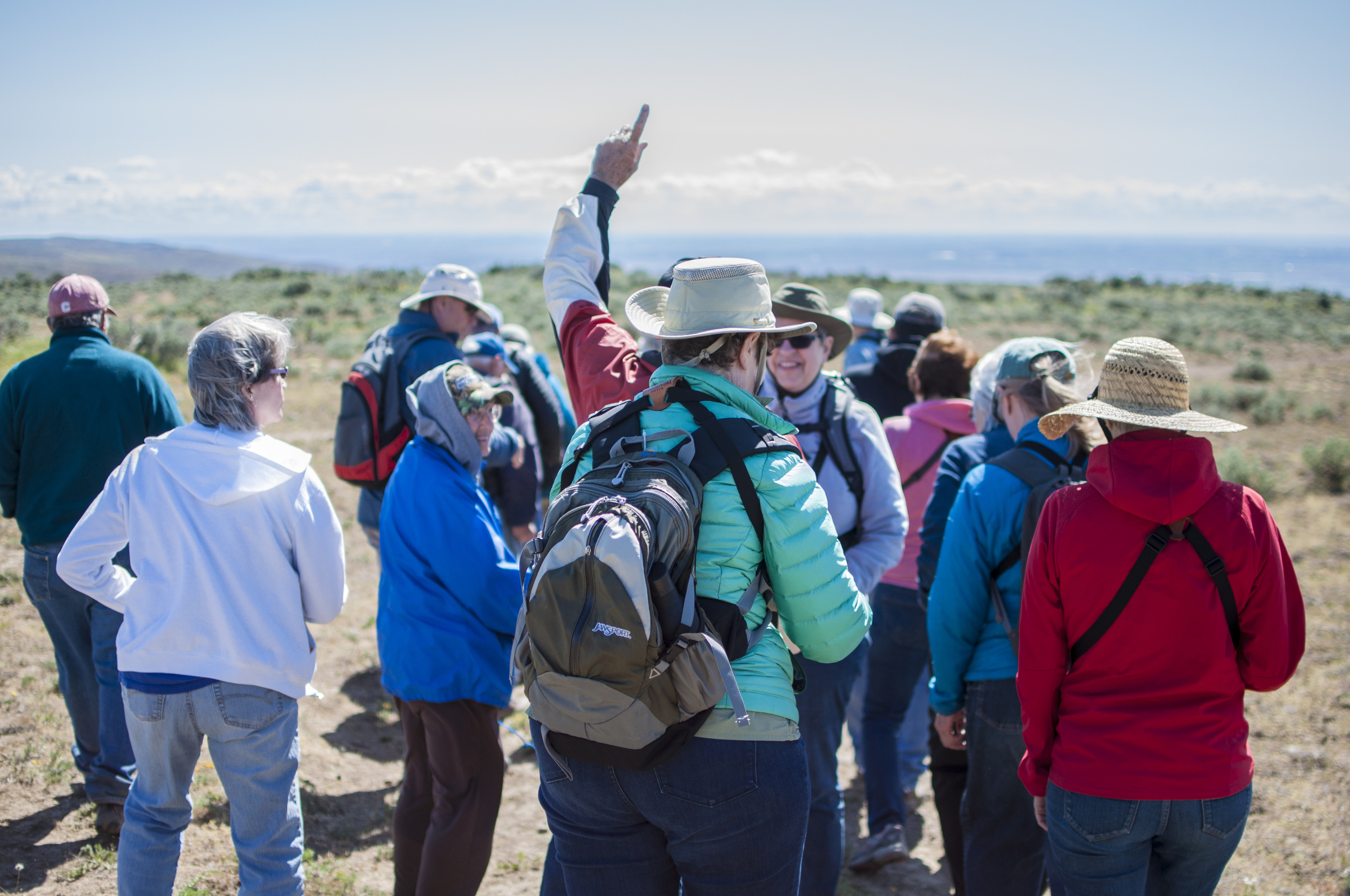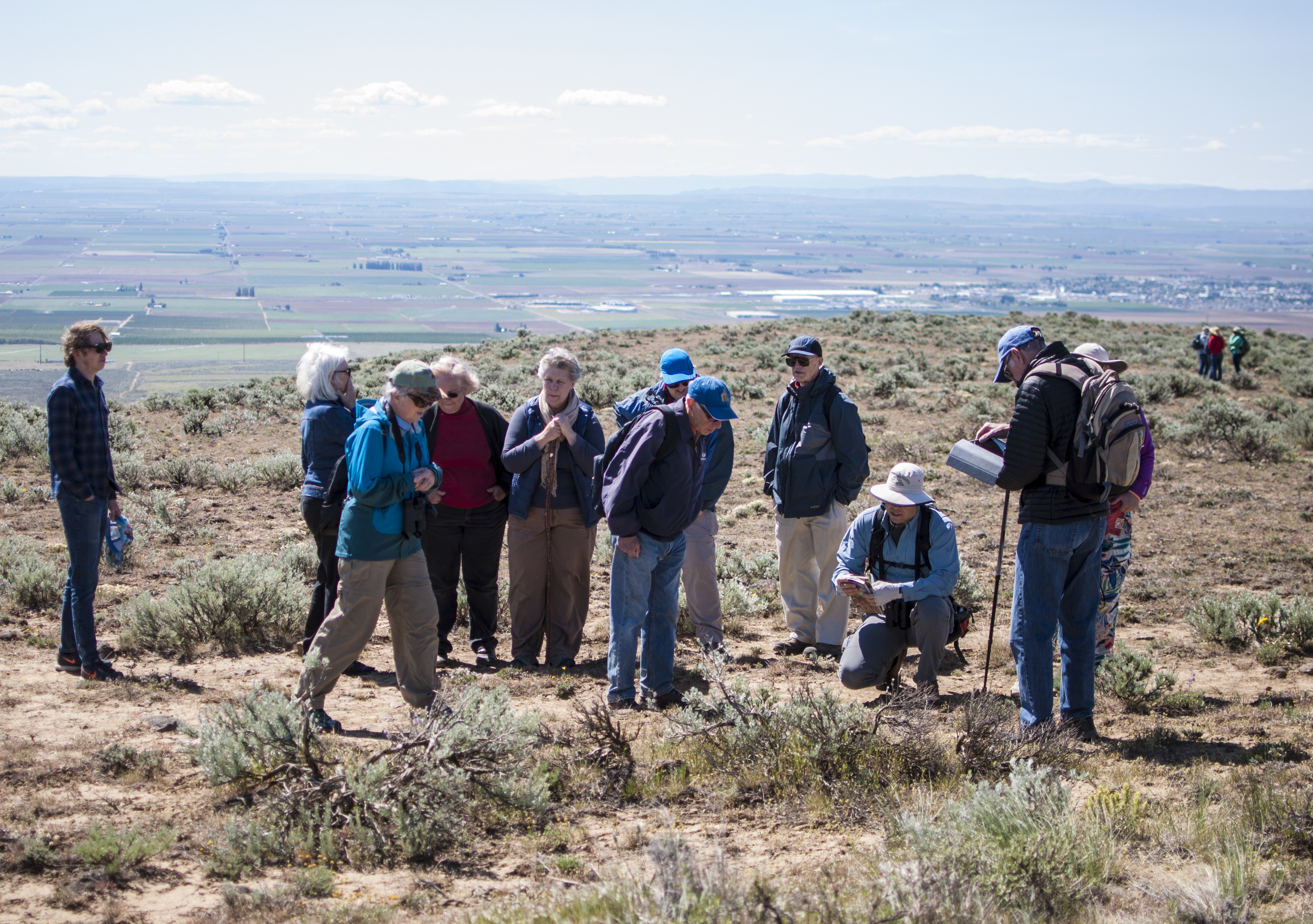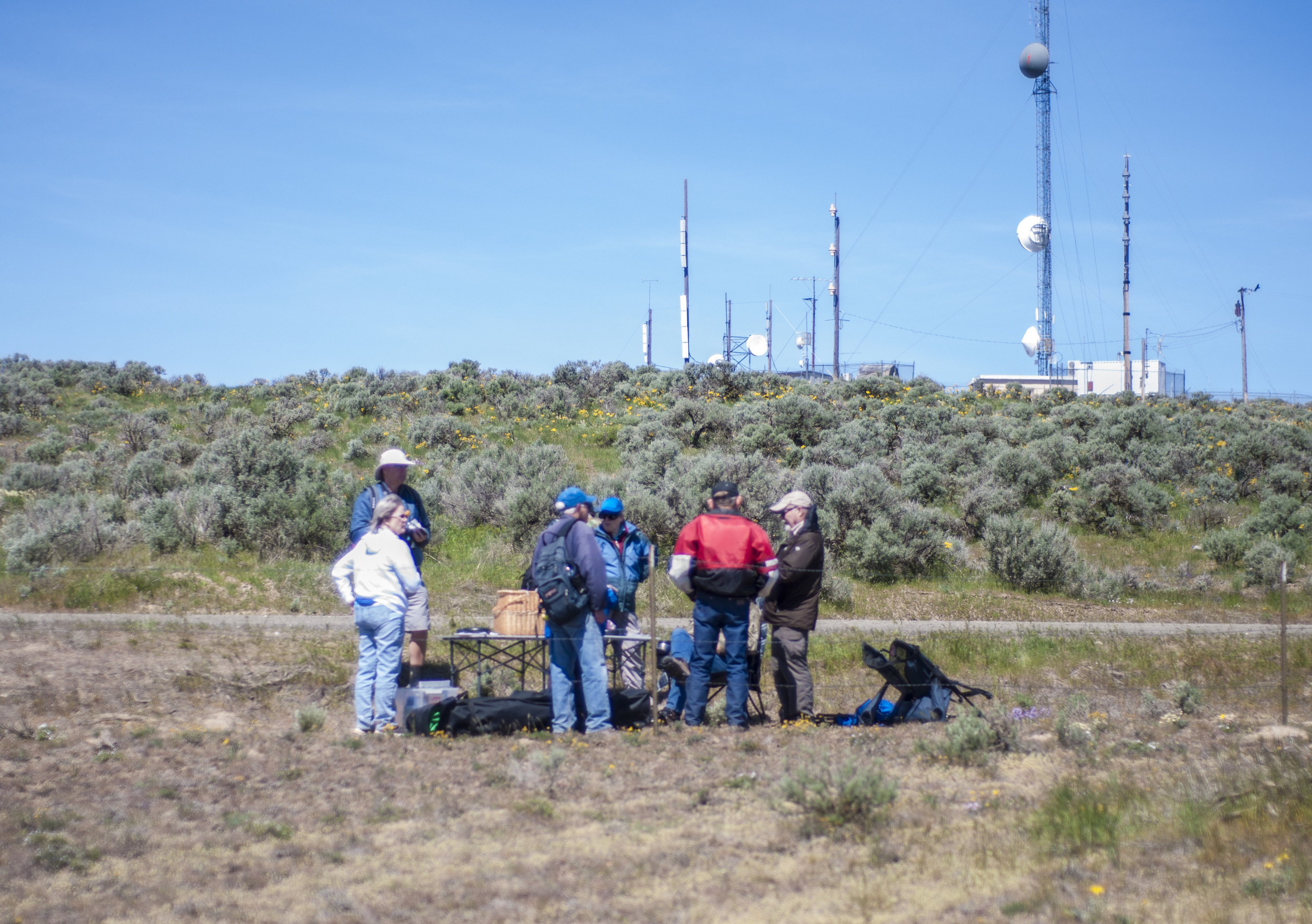The 2020 Pearl Hill Fire burned nearly 33,000 acres of sagebrush in Eastern Washington including most of TNC’s Moses Coulee Preserve, but stewardship staff and volunteers are making remarkable headway on sagebrush recovery.
Discover Washington's Shrublands
Search Party for Pygmy Rabbits
Written & Photographed by Lauren Miheli, Volunteer Coordinator and Anna Snook, Volunteer Photographer
A hike in Washington’s sage brush country will reveal plant, animal, and bird populations distinct from those on the West Side of the state. On a typical day one would be lucky to see mule deer, badgers, meadow larks, mourning doves, small horned lizards and a great many other small mammals, birds and reptiles. Ideally if you saw a rattle snake it would be from a distance. Something you most likely wouldn’t encounter would be a Columbia Basin Pygmy Rabbit. Although native to this region, the pygmy rabbit is in danger of becoming extinct. The Washington Department of Fish and Wildlife (WDFW) has been working on a project to breed these rabbits in semi-captivity and reintroduce populations back into the wild, including on our Beezley Hills Preserve. Bringing a species back from the brink of extinction is challenging work. There is no manual on how it’s done. Wildlife biologists, using their knowledge of the rabbit’s behavior, funding from the federal government, and a lot of intuition, utilize a trial and error approach to breeding and reintroducing them to their native sage brush habitat in central Washington.
In order to determine if any rabbits released have successfully survived in the wild, Jon Gallie and Shea Gibbs of WDFW invited a crew of about 30 Nature Conservancy volunteers to traverse the land near the release sites and look for signs of pygmy rabbits: burrow holes and scat. Volunteers split into groups of 4, with each group led by a member of WDFW’s staff armed with a GPS unit and collection tools. Each volunteer covered about 7 miles each day, traversing back and forth, and up and down hills, throughout sage brush.
While searching for signs of Pygmy Rabbits I was struck at how familiar I became with signs of other desert species – badger and coyote dens, snake holes, mouse holes, cottontail rabbit scat, prints and scat from deer, coyotes, and the feral horses that were grazing in the area. Upon first site a badger den filled me with excitement. After the 5th or 6th one I became jaded. Throughout two days of hiking and covering sage brush land that could once have been home to dozens of Pygmy Rabbits, with all of the volunteers intently searching on those two days, only one burrow with fresh scat was located. So this is what it feels like to look for an endangered species - searching and searching, and not finding what you’re looking for. We collected valuable data that the biologists will use to improve their strategy, but we were disappointed that we did not find more signs of pygmy rabbits. Two days of hiking for nearly 6 hours straight and the absence of signs of Pygmy Rabbits was felt in our collective psyches. The lack of discoveries does not mean that Pygmy Rabbit recovery is hopeless. Aside from the literal silver lining (partial cloud cover on both days cooled us down and made the typically unbearable eastern Washington heat a non-issue) the one burrow that we did find gives the project managers something to be excited about. Previous surveys of the area revealed no burrows at all. Samples of the scat were collected that will be sent to the lab at the Oregon Zoo, where DNA from all captive-bred rabbits is kept on record, and we will learn when the rabbit that left the evidence was released, how long it has survived in the wild, and if we’re really lucky we will find out that it has DNA that has not yet been recorded - which would indicate that it was wild born.
The biologists at the Washington Department of Fish and Wildlife are doing amazing work, and are highly dedicated to their task of bringing this species back to healthy population numbers. I believe they are up to the challenge, and I hope that we can continue to improve our land management and conservation practices, so that other species are not pushed this far in the future.
LEARN HOW YOU CAN VOLUNTEER
Beezley Hills Wildflower Day
Photographed by AJ Dent, Volunteer Photographer
It was a celebration of the magic of Eastern Washington at our Wildflower Day Celebration! Visitors explored the Beezley Hills preserve, then joined in the festivities with other Conservancy members and Legacy Club guests through guided walks and talks about nature.
Peter Lancaster began at the trailhead to talk about the Pygmy Rabbit recovery program happening in the area. Afterwards, Molly Boyter, Botanist for the Bureau of Land Management and Emily Orling, Botanist for Rebalance Consulting shared information about plants and flowers.
Become a member today
Soaring Above These Historic Lands
The Beauty of Moses Coulee
Video by Ryan Haugo, Senior Forest Ecologist
Last year, we partnered with the Yakima Valley Community College to build new aerial tools for forest conservation.
Recently, we brought this tool to the Nature Conservancy Field Station in Eastern Washington. It gave us a chance to film the first attempt for the Conservancy at flying the “quadcopter for conservation” through the beautiful perspective of our 33,000 acre Moses Coulee Preserve – an amazing preserve that doesn’t have a lot attention today.
It’s a staggeringly beautiful place created by the great lava flows and flooding of the early Miocene epoch. Today, it’s mostly farmland, providing a stunning contrast of bright green fields, breezy plateaus and a deep river gorge that has developed over the past 20 million years. As a result of the erosion, beautifully textured igneous rock canyon walls and precious sagebrush habitat that local wildlife rely on are abundant and easily accessible by foot and the many trails throughout the preserve.
This bird’s eye view helped to see both the beauty and the landscape scale of our conservation in and around the historic preserve!








